
- Korean Language Summer Course in Pyongyang
- Dandong DPRK Border
- Shanghai Bike Tours
- TOUR EXTENSIONS
- How to Book a Tour
- Testimonials
- KTG 360°
- Humanitarian Work
- Where to Go
- Tours & Dates
- Hotels in North Korea
- Hotels in Pyongyang
- Travel Insurance
- Transportation
Interactive Map
- DPRK Information
- Facts & Figures
- DPRK History
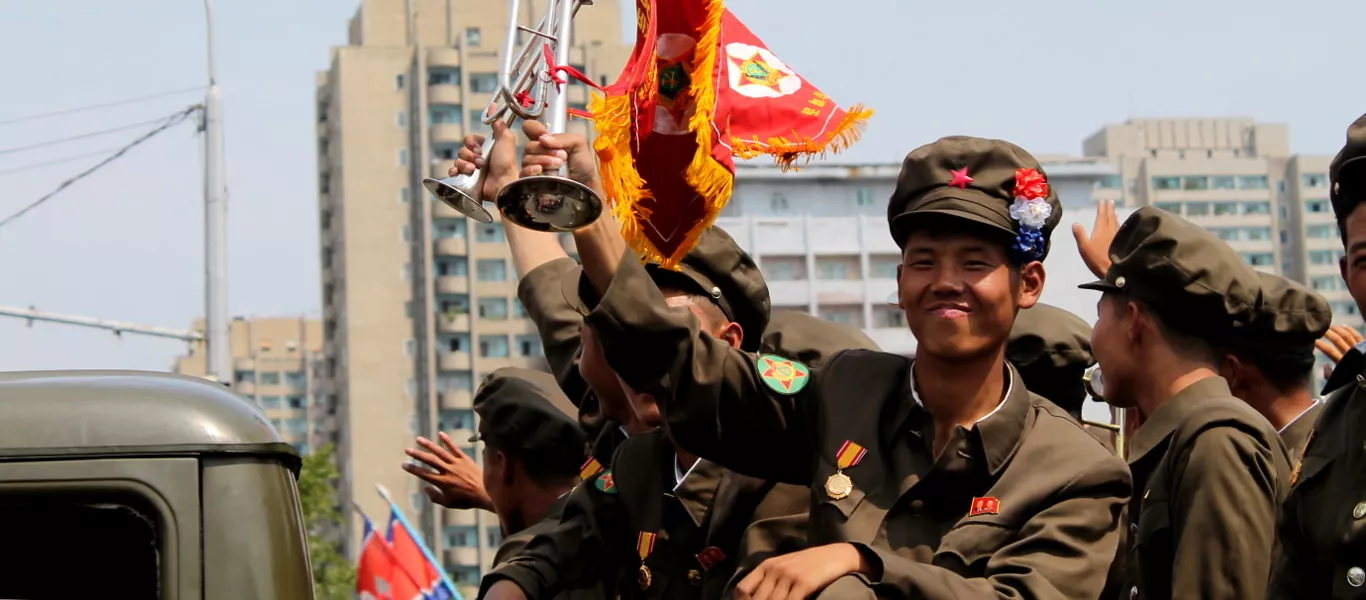
TELL ME MORE
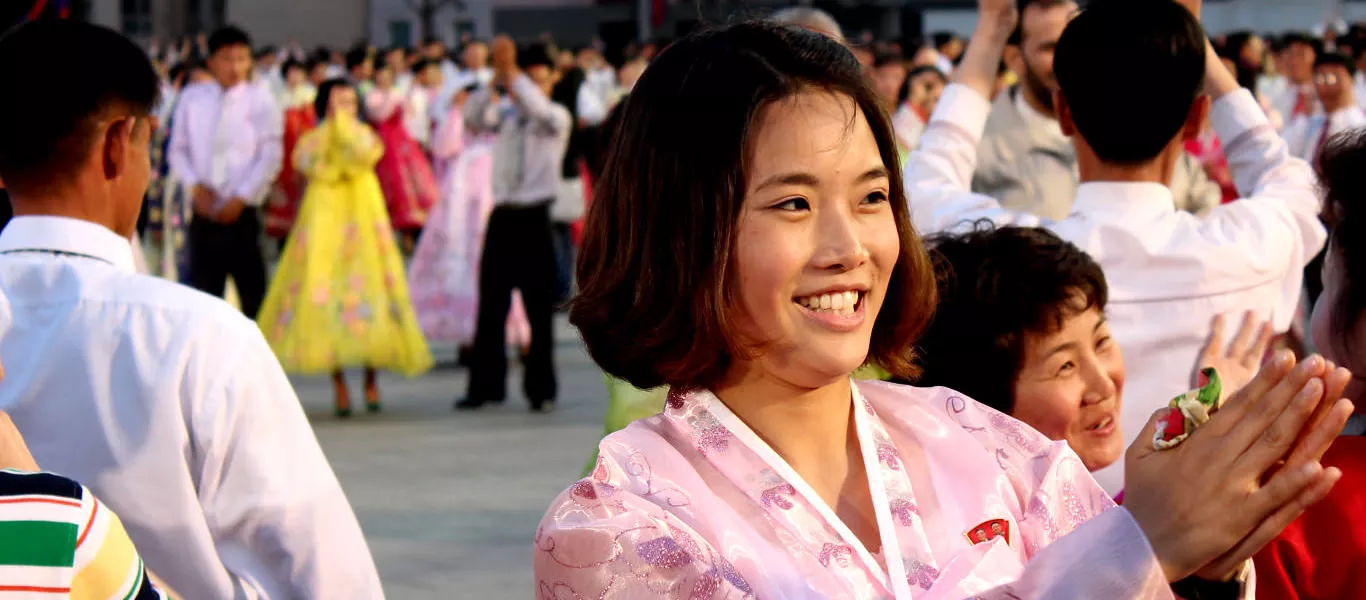

KTG North Korea Travel
UPDATE August 2023: The DPRK has re-opened its borders. Please read here or follow us on Facebook for more information.
Specialists in promoting tourism in North Korea, at KTG we organise tours to one of the world's most secretive and less visited destinations in the world; the Democratic People's Republic of Korea (DPRK, commonly known in the West as North Korea).
TripAdvisor's
2020 Travelers' Choice
formerly called
Certificate of Excellence
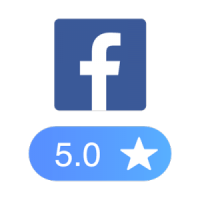
100% 5 Star
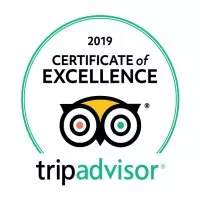
2019 Certificate
of Excellence
KTG video filmed in winter
KTG video shot during the May Day celebrations in Pyongyang
Join our Mailing List for Updates!
Our services.
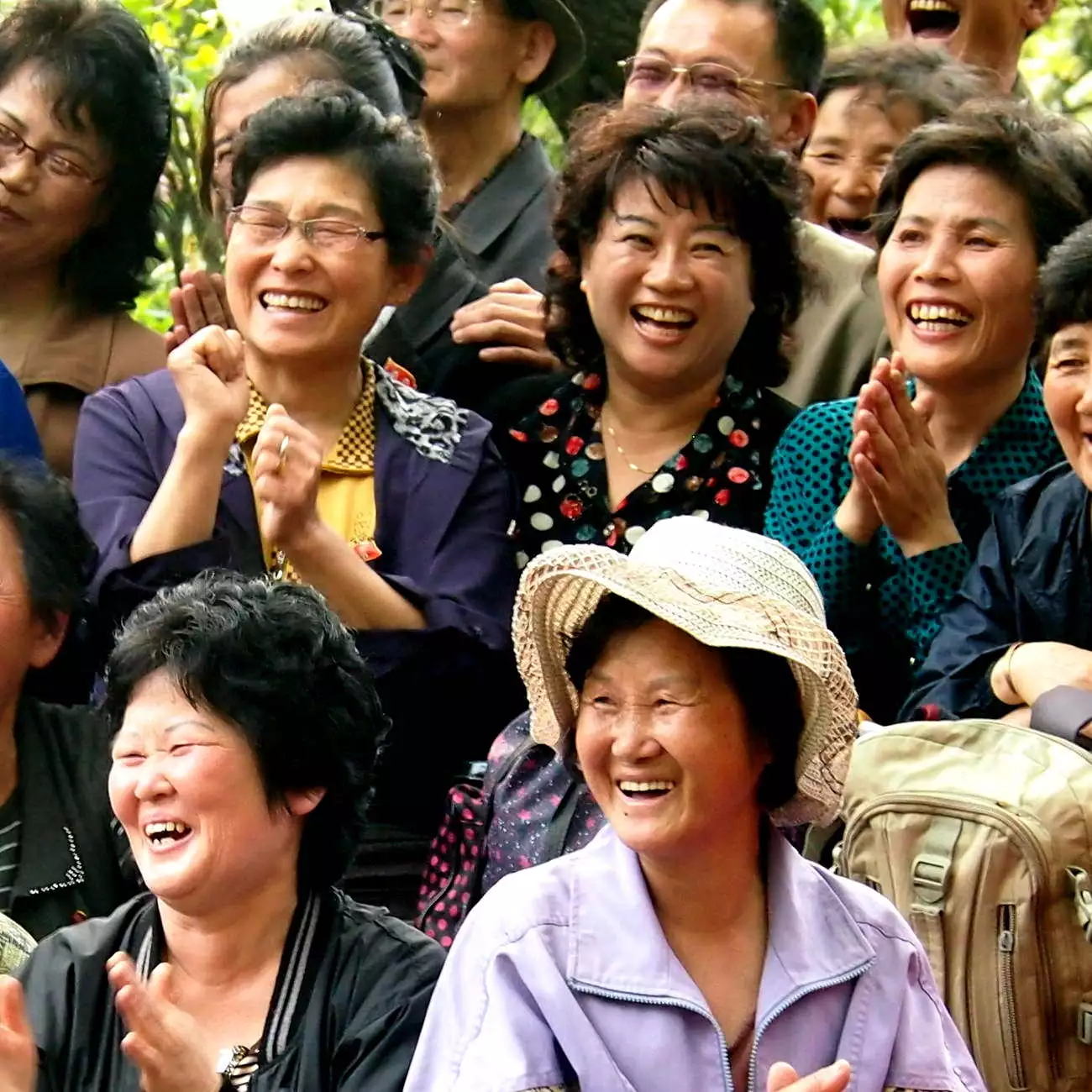
Small sized groups
every month
Small Sized Group Tours
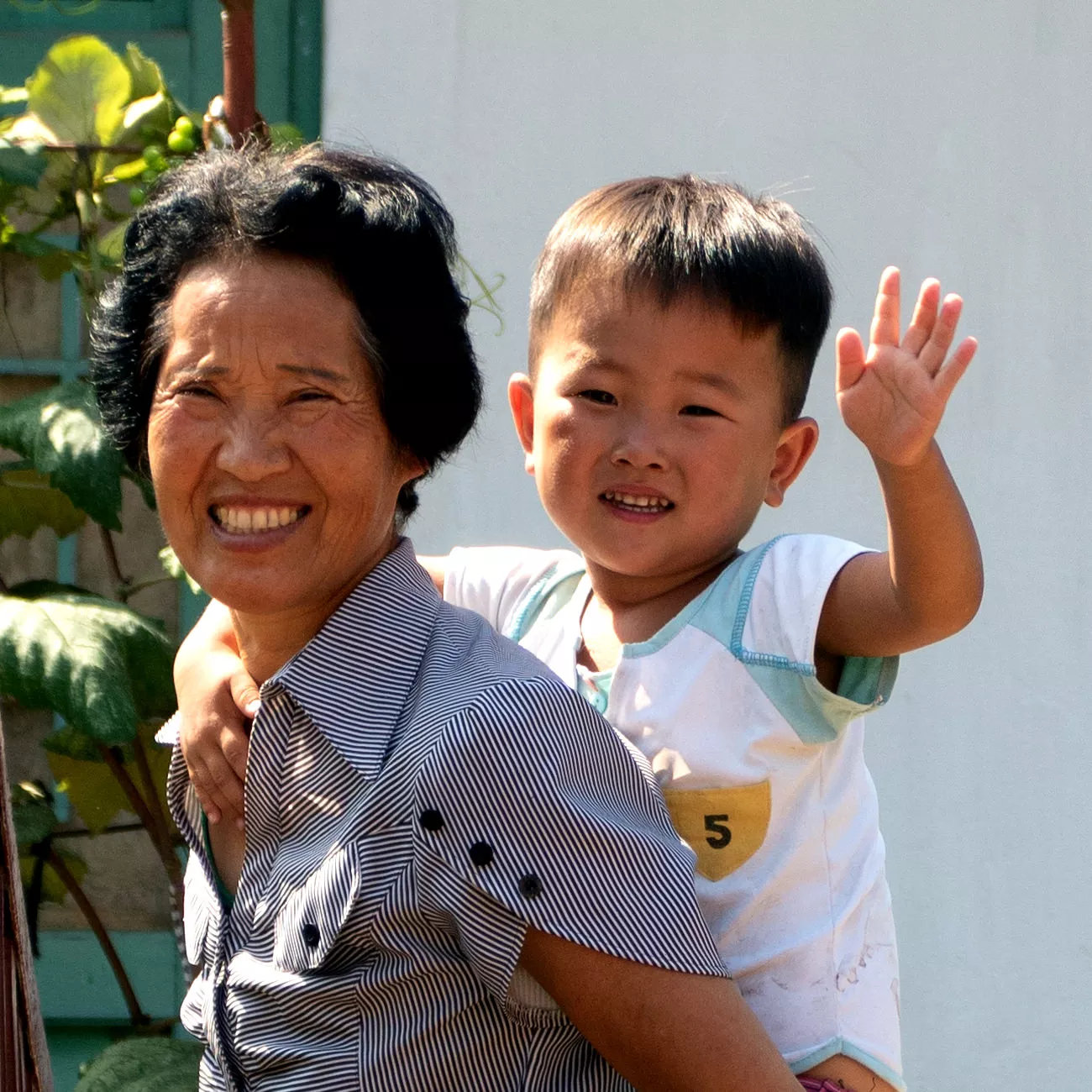
Fully tailored private
tours all year round
Private Tours
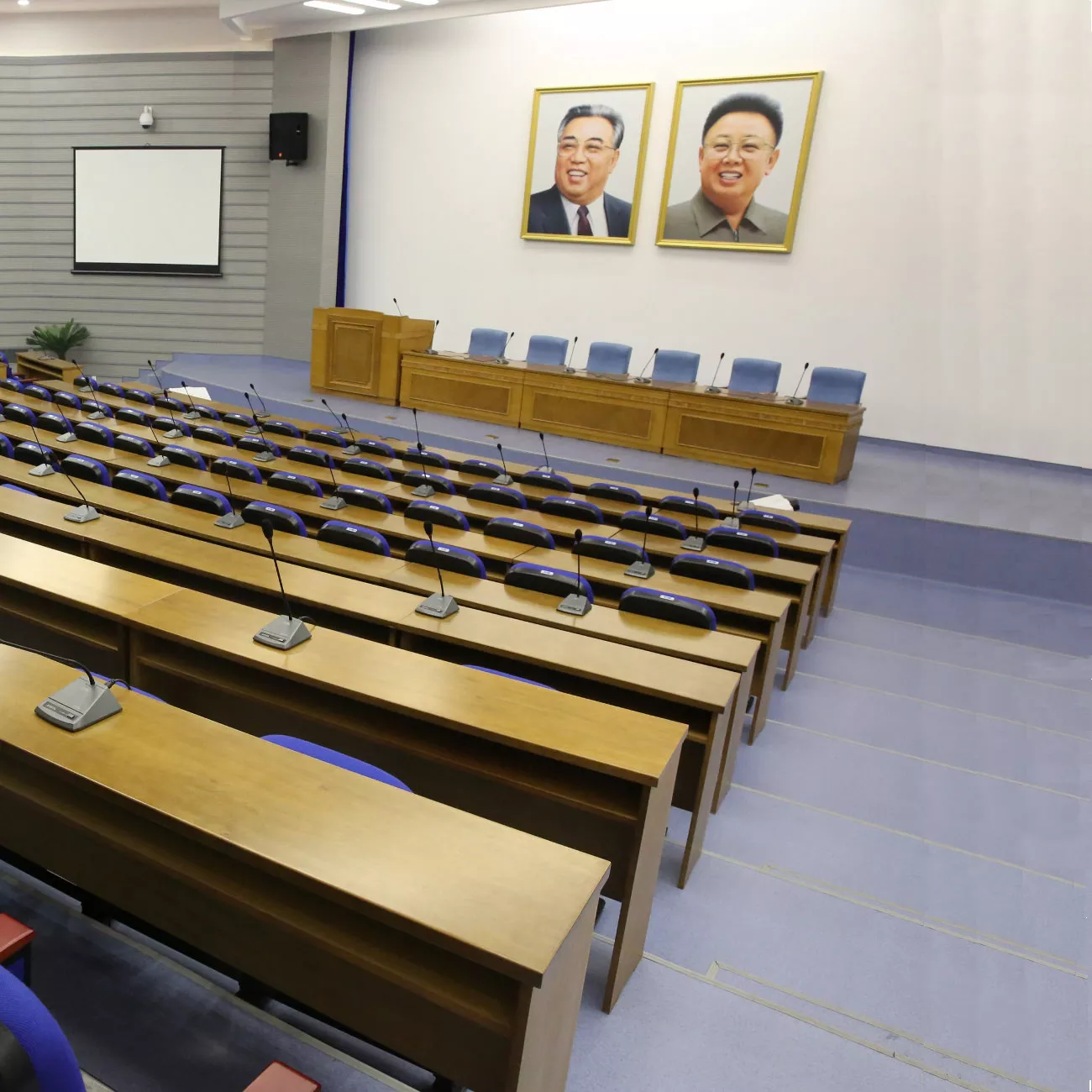
Korean language summer
study course in Pyongyang.
Be part of a very limited
number of Westerns to have
studied in DPRK
What Our Customers Say
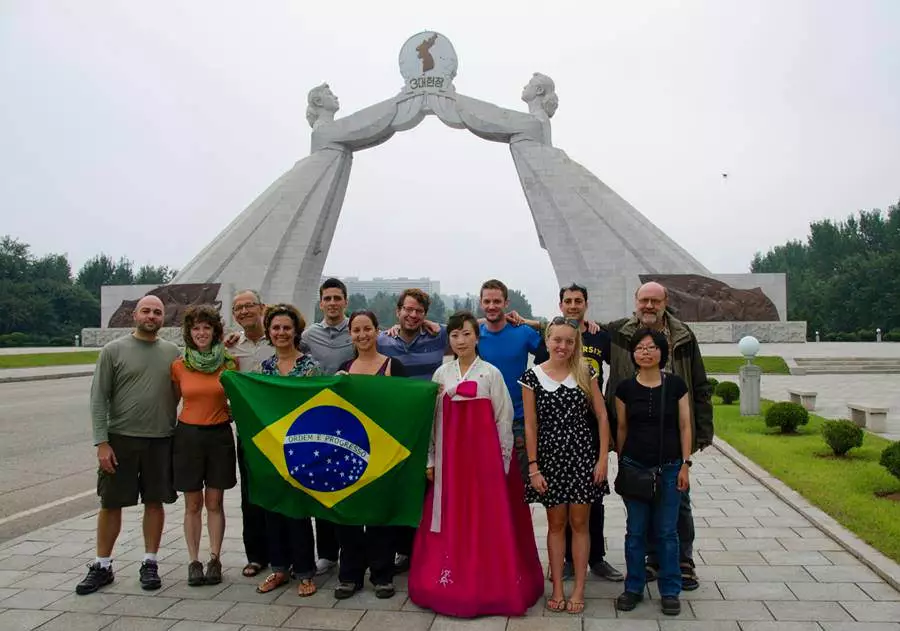
Put your text here.
"Joined KTG for their June tour to North Korea. Excellent, quick and easy organisation done by Rayco, who also joined us on the trip and was of great help. KTG was very flexible in what we wanted and we managed to do a few extra things on the spot that few other tours do on their trips..."
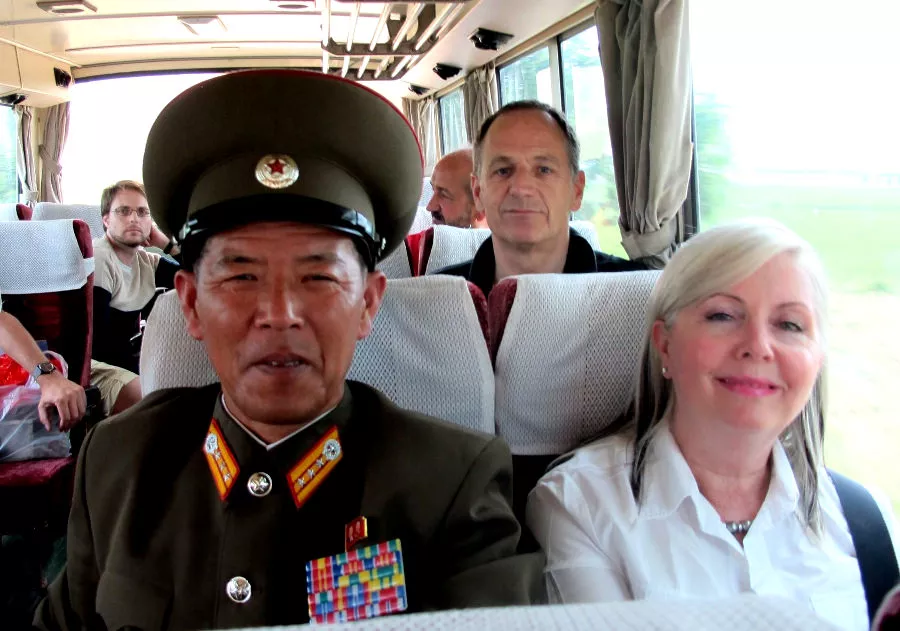
"I have reflected on whether I was simply lucky or the tour/destination or if KTG itself attracted a certain calibre of tourist. My conclusion is that all those factors apply - the destination is not for the precious but rather those who are savvy and would normally travel independently..."
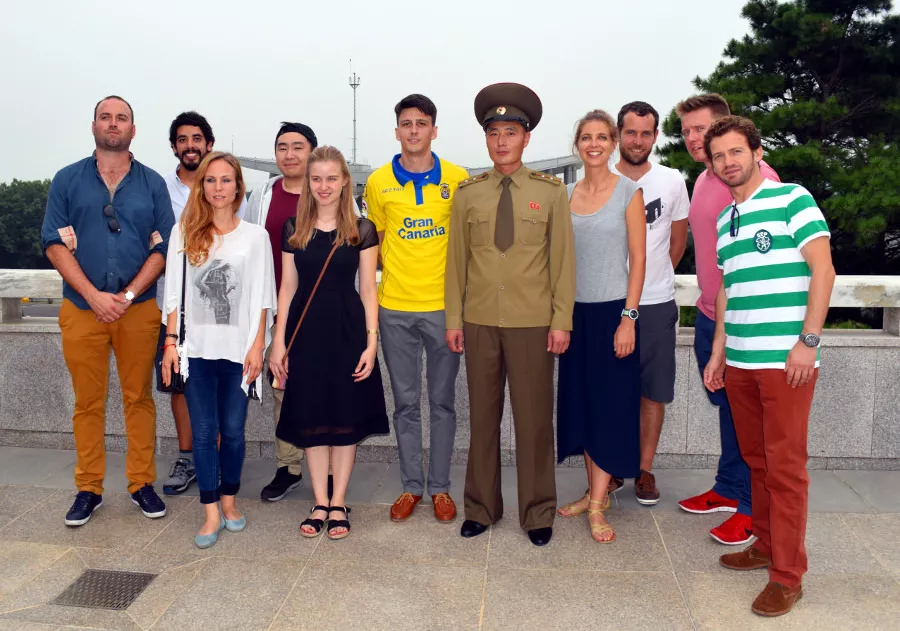
"I had done extensive research prior to my visit to DPRK and am now very pleased with having chosen KTG as travel organisation and kudo's to Rayco Vega for the pleasant and informative communication prior to the trip as well as his companionship on the tour!"
Going to North Korea is not something done frequently and it is our top priority to ensure that you make the most of your experience in the DPRK whether going with a group or individually.
Our goal is to show you as many aspects as possible of North Korea and to maximise the level of interaction with locals, something we believe is attainable with our small sized groups.
We are the forefront of promoting unique forms of tourism in North Korea whether it be spending 3 weeks studying in Pyongyang, working with local farmers or exploring the streets of Pyongyang by bike.
Latest Blog Posts
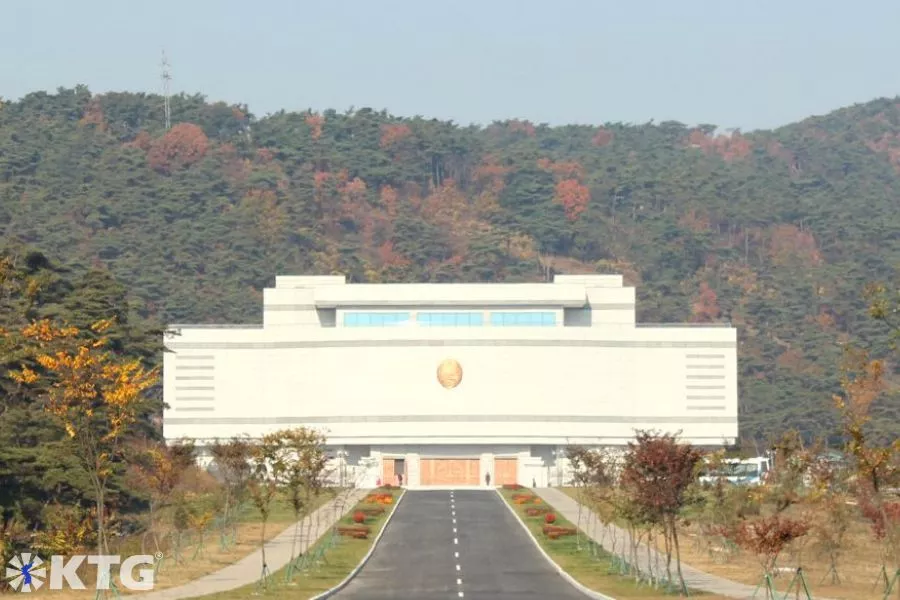
Thousands of gifts given by Koreans from North & South Korea and abroad are housed here.
Unveiling the Enigma | The National Gifts Exhibition House
Date: 24 November, 2023
The National Gifts Exhibition House is situated just outside of Pyongyang, the vibrant capital of North Korea, by Mt. Mt. Ryonggak, surrounded by pine trees a setting that strongly contrasts with...
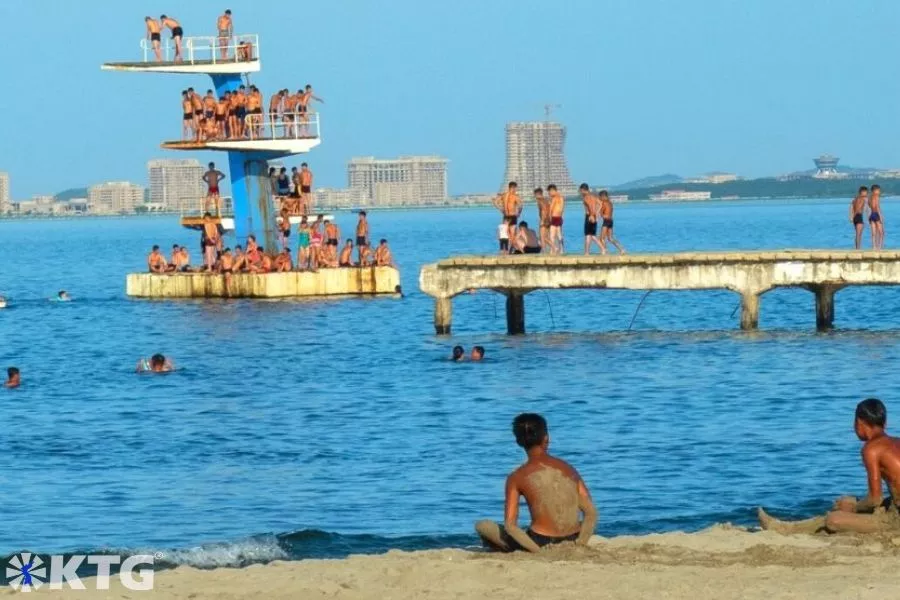
Fancy a dip? You can see the Kalma-Wonsan resort in the background.
North Korean Beaches | Sea, Sun, Singing, Soju Sipping & Seafood BBQ
Date: 23 November, 2023
Welcome to the lesser-known paradise of North Korean beaches, where the pristine waters, sandy shores and banter with locals provide a strong contrast to any preconceived notions one might have of...
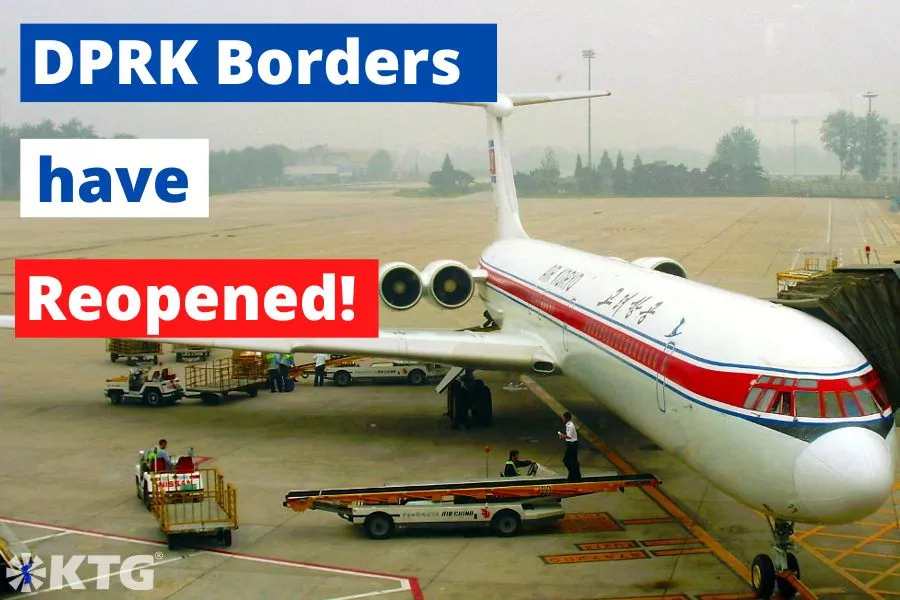
Air Koryo plane in Beijing
North Korean Borders Reopening! | Light at the End of the Tunnel?
Date: 30 August, 2023
As we announced on our Facebook page several weeks ago saying that North Korea was to resume international flights and train routes by the end of August, the DPRK has finally opened its borders...
Our proximity to the DPRK allows us to travel there on a regular basis. We are also in daily contact with our Korean partners in both North Korea and in China and this allows us to push for new forms of tourism in the country.
We work directly with Pyongyang and provide North Korea tours in English, German, French, Spanish, Italian, Russian, Japanese... To communicate with us you can do so in English, French, Spanish, Chinese and Korean as we have a strong multicultural team that will be able to deal with your enquiries.
We are in daily contact with our Korean partners in Pyongyang and have, over the years, earned their trust and built a solid relationship with them.
KTG Resources
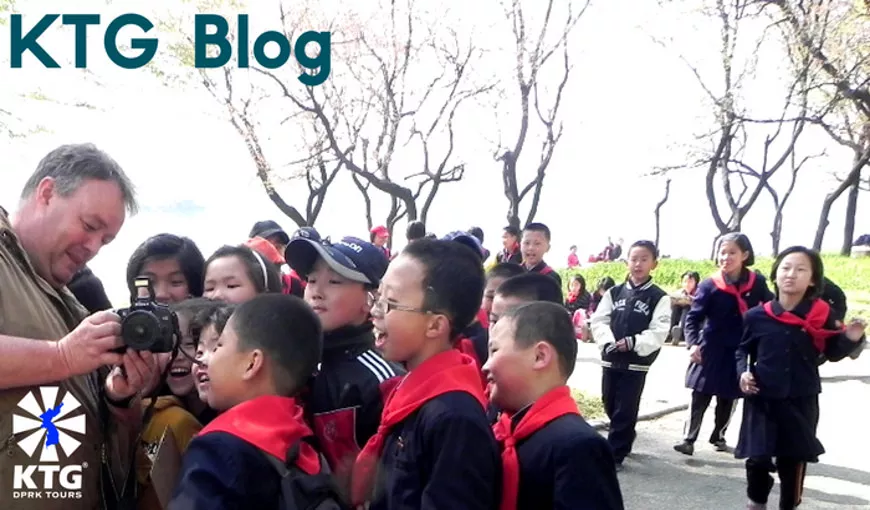
Check out our blog covering everything related to North Korea!
From historical sites to epic train adventures from Pyongyang to the Russian border!
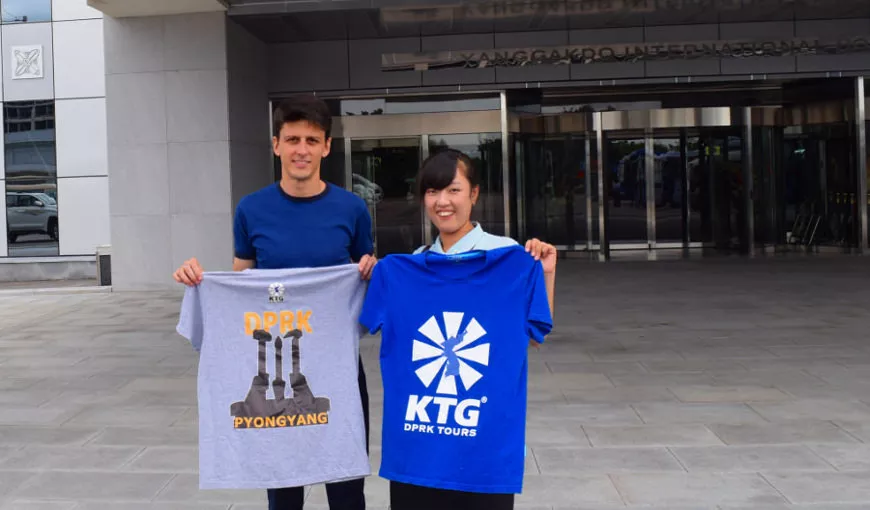
Ask other travellers questions, post any pictures. Interested in a DPRK souvenir? Ask our community to help out!
Travel Forum
Ask our community questions about travelling to North Korea, help in obtaining postcards from Pyongyang, etc
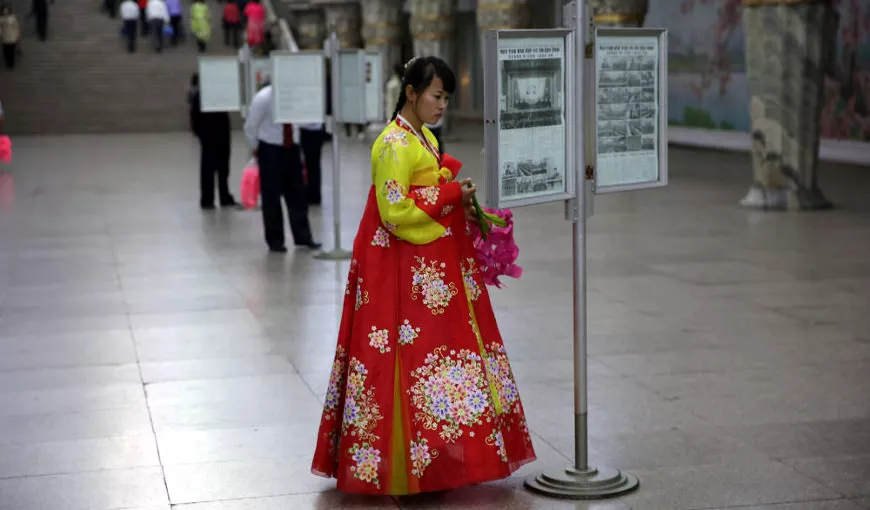
KTG® DPRK Travel guide - read our complete PDF guide (4.9 MB)
DPRK Travel Guide
KTG®'s exclusive free DPRK Travel Guide. Ranging from places to see, hotels, what to do... Download it for free!
When it comes to our North Korea Travel philosophy, our goal is to increase contact with locals as much as possible, arranging visits not only to the main highlights of the country but also to places that show what life is like in North Korea and that allows for interaction with Koreans . Examples are visits to cooperative farms where you can see where farmers live and work, schools as well as places where Koreans mingle, allowing our travellers to see how they live and to join them in some of their leisure activities.
About North Korea
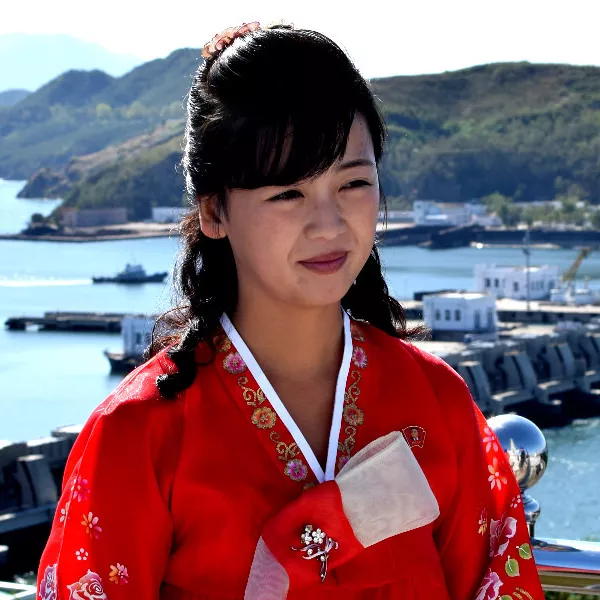
List of places that
can be visited in
North Korea
Places of Interest
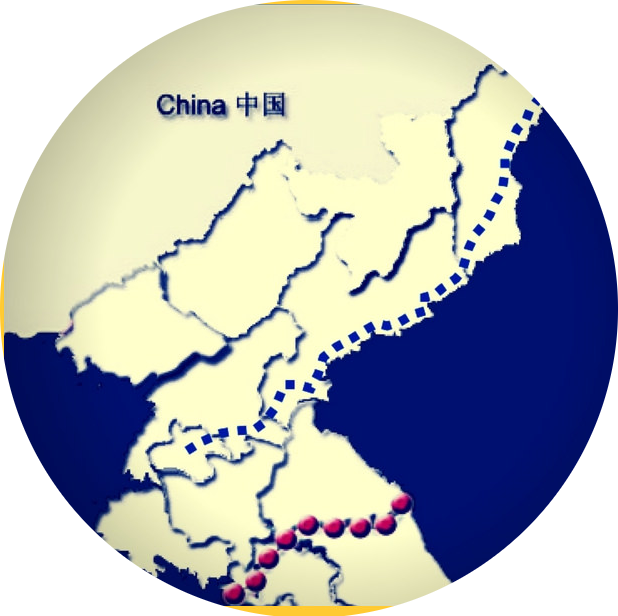
of North Korea

We are verified
PayPal members
and accept credit/debit
card payments
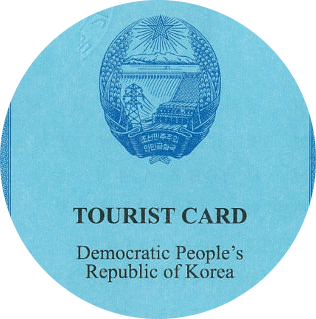
How to book
your trip to North Korea
in 6 Easy Steps!
Whether it is because of the peculiarity of its political system, its 1970s style buildings combined with a feel of a 1950s China, its unpolluted scenery, the warmth of its people or the colossal communist monuments in Pyongyang, a trip to the DPRK will be an unforgettable one. The vast majority of our customers simply describe it as being the most interesting places they have ever visited.
Our North Korea Travel Website
We have been going to DPRK since 2008 and our enthusiasm and curiosity regarding any shape and form of North Korea travel remain boundless .
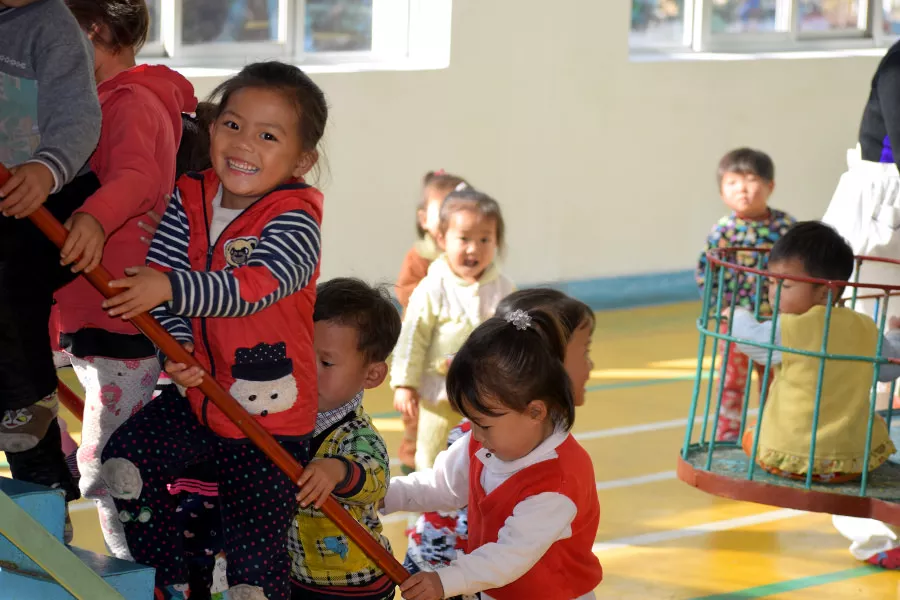
Nursery in a cooperative farm on the westside of North Korea. Farmers work and live in cooperative farms.
We are aware that there is great interest out there in travelling to North Korea and that many people are fascinated by this mysterious country but simply feel that there is not enough information available. As a result we provide tours as well as a variety of information related to the DPRK. By doing so we feel more people will have the chance to visit the DPRK. This in hand will increase the potential number of people deciding to work, cooperate and being engaged in cultural exchange with North Korea, ultimately benefiting locals.
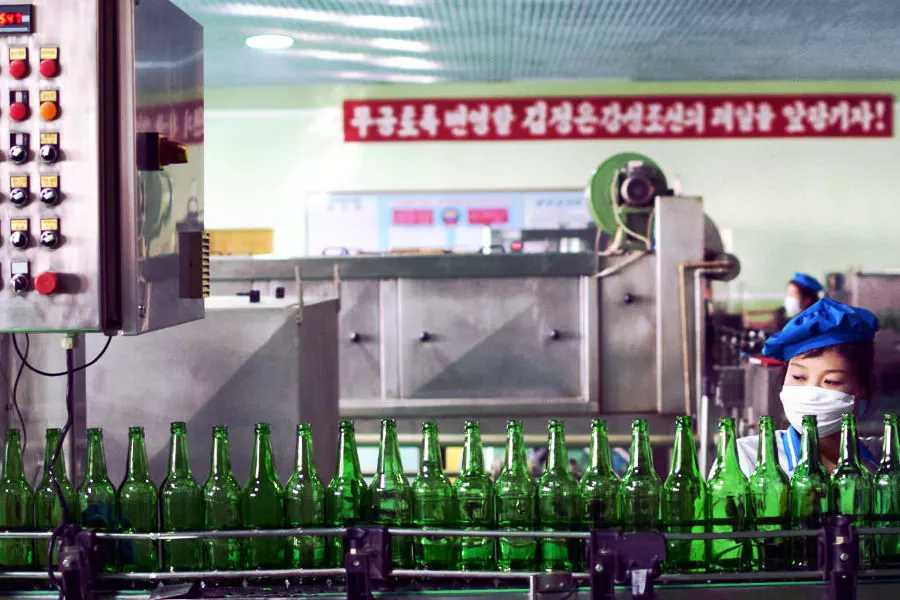
North Korean worker in a water bottling factory
We therefore try to show as many aspects of the DPRK as possible, covering issues such as updates, history and the economy of North Korea so as to allow our web viewers see the overall context of the country before visiting it. Regardless on whether you will travel to North Korea or not, we are always happy to answer any queries you may have regarding the DPRK.
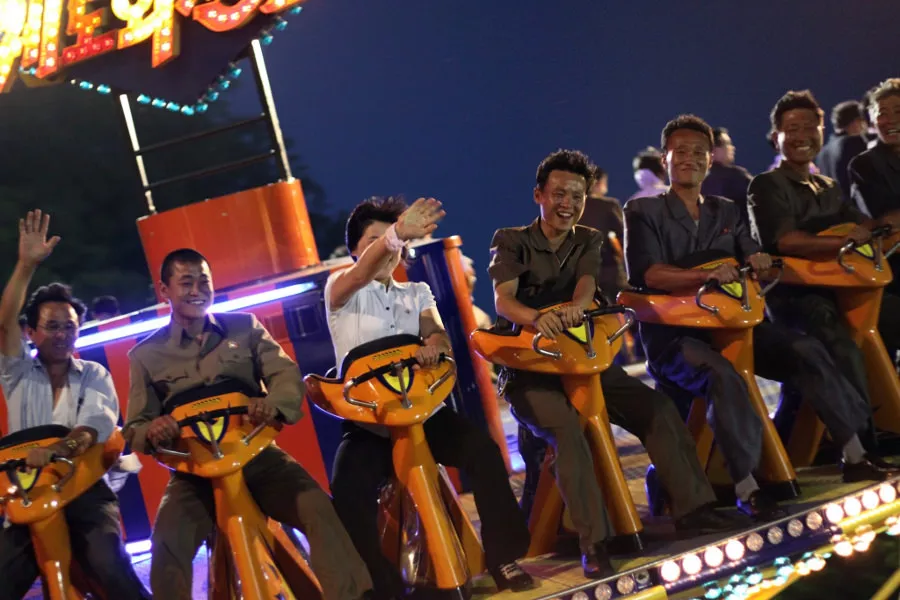
Evening funfair in Pyongyang
If you would like to contribute to this website, or if you have any questions you would like to ask us or other people who visit our site, please feel free to leave any comments or queries in our North Korea Travel Forum or to drop us an email at any time. We will also be adding comment sections on some pages of our site where you are welcome to write down your views, no registration required.
If you are simply interested in knowing more about the DPRK please browse our website as we have a lot of information on North Korea tourism and the DPRK in general.
- Room 1220, Yamao Buidling, Zhongshan Road, Heping District, Shenyang, China
- +86 24-2284 3816
- [email protected]
- >>> Group Tours
- >>> Private Tours
- >>> Study Tours
- >>> Air Koryo
- >>> Cycling in Pyongyang
- >>> Domestic Flights
- >>> Coaches
- >>> How to Book
- >>> Cancellation Policy & Terms
- >>> Travel Insurance
- >>> Privacy Policy
- Privacy Policy
Young Pioneer Tours

North Korea Independent Tours
If our scheduled group tours don’t match your travel dates or interests, we can create your very own North Korea private tour. Our independent tours are suitable for all solo travelers, couples, friends, families and travel groups.
Not only can we organise your trip on any dates to suit you, but our experienced sales agents can also make bespoke itineraries tailor-made to exactly what you want to see and do! Whether you want to visit a specific city, go for a hike in the mountains, watch a football match, partake in a Korean study language program, see the must-see sights of Pyongyang, or try a specific restaurant you’ve read online, YPT are the company for you! We offer the cheapest rates to North Korea.
During your private tour you will be accompanied by two local Korean guides (several languages are available), and you will have your own driver and vehicle.
We have staff in China that are able to meet you, assist you, answer your questions and ensure you have a great trip before your tour commences. Not all North Korean tour companies offer this service. If you’d like to explore an independent tour option, please contact us . We can customise your unique visit to North Korea for you.
Step 1: How would you like to enter and exit North Korea?
We can arrange your train and flight tickets between China/Russia and North Korea.
Trains between China and North Korea depart daily. There are multiple Air Koryo flights during the week and are seasonal.
Air Koryo flights between Beijing and Pyongyang – €370 each way or return €595 per person
Overnight sleeper train between Beijing and Pyongyang – €170 per person
Dandong (Chinese border town city to North Korea)
Day sleeper train between Dandong and Pyongyang – €120 euros per person
Vladivostok (Russia)
Air Koryo flights between Vladivostok and Pyongyang – €350 each way or return €600 per person
Flights are also available from Shanghai, Shenyang and other cities.
Air Koryo gives children under the age of 12 – 2 years of age 25% discount on flights. Infants under the age of 2 will receive 90% discount on Air Koryo flights.
Step 2: North Korea Tour
Cost per night per person (minimum stay of 2 nights)
The above tour costs include all meals unless detailed as an option on the itinerary, hotel accommodation, two Korean tour guides and a driver, all transportation within the DPRK and all entry fees for attractions unless specified within the itinerary.
We offer languages spoken in English, German, French, Spanish, Italian, Russian, Chinese, Japanese or Arabic.
Infants two years of age and under are free and children 13 years of age and under receive 30% discount per night.
Below are sample independent tour itineraries:
Step 3: North Korea Visa
Every facet of the DPRK visa process is taken care of by us. The visa is a separate paper document and we will arrange to meet you before your tour to hand over your visa document. Visas are €60 per person.
That’s all there is to it! Drop us a line if you’d like to know more information or details about your tour to North Korea with us.
- Suspendisse tincidunt nunc nec
Tripadvisor
Latest news.
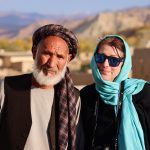
Afghanistan Travel Update
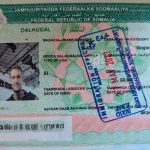
Somalia introduces new policy to visa on arrival
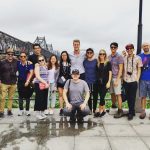
North Korea Border City of Sinuiju may open to tourists first

An American in South Korea Heads North (Part 1)
- Terms & Conditions
- Payment Policy
- North Korea Tours – 2017 Tours
- Tour Extensions
- Independent Tours
- North Korea FAQ
- Our Terms and Conditions
- Our Payment Policy Terms
©YoungPioneerTours.com 2024. All rights reserved.
- North Korea
- Travel Guide
- Premium Hotels
- China-DPRK Train
- Premium Tours
- Group Tours
- Private Tours
- Signature Series
- Sport & Adventure
- Why Uri Tours?

The DPRK Classic – 5 Nights
5 nights – from €1360.
This 5-night classic tour of North Korea is designed to cover all the classic sites in one extensive action-packed itinerary. You’ll visit the political highlights in Pyongyang such as the Tower of Juche Idea, Victorious Fatherland Liberation War Museum and the Kumsusan Palace of the Sun where the Great Leaders lie in state. We’ll stay overnight in North Korea’s self-confessed best hotel on a visit to Mt. Myohyang and drop into North Korea’s ‘Silicon Valley’, the city of Pyongsong, famous as a hub for science and technology. Of course, no visit to North Korea would be complete without a day trip to Kaesong and the DMZ! This is a varied tour that’s perfect for the first-time visit to North Korea.
Booking Options
Select an option... October 19 – 24, 2024 ( € 1,360.00 )
Room Accommodations
Select an option... Single ( € 200.00 ) Twin / Double I want to share
Rooms come standard with two twin beds. If signing up with a companion and sharing a room, the double rate applies. If requesting your own room, single rate applies. If sharing is requested, we do our best. But if we cannot, single supplement fee applies.
- Pay Deposit
- Pay in Full
What's Included
Day 1 – depart for pyongyang.
At 10:30am, meet us inside Terminal 2 of the Beijing Capital International Airport to check in for our scheduled departure of 13:05pm. We will hand out your DPRK visas at this time. Timings to be confirmed.
We will then fly to Pyongyang, the capital of the DPRK, home to the most iconic monuments and political sites. Our Korean tour guides will be meet us at the airport with a warm welcome.
Our first stop will be the Arch of Triumph , the world’s largest triumphal arch. From the top, we will get our first panorama view of Pyongyang city!
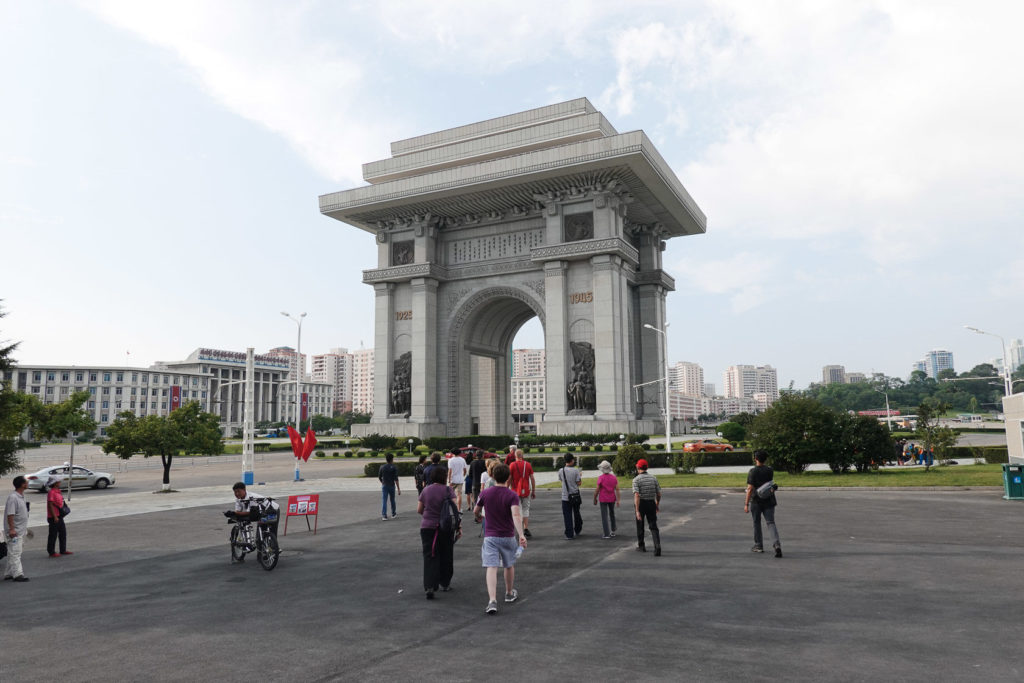
After lunch, head deep underground to take a 5-stop ride on the Pyongyang Metro , the deepest metro in the world and filled with mosaics, monuments, and plaques commemorating the DPRK’s revolutionary history.
Learn about North Korea’s national ideology, the Juche philosophy, on a visit to the iconic Tower of Juche Idea . We’ll take the lift 150-meters to the top for the best views in Pyongyang city! Visit the massive Party Foundation Monument , built to commemorate the 50th anniversary of the foundation of the Workers’ Party of Korea, recognizable by the communist hammer and sickle but with an added North Korean twist. Catch an afternoon performance of the incredible Pyongyang Circus .
Walk on the new Ryomyong Street , an impressive boulevard home to Pyongyang’s most extravagant apartment complexes. Opened in just April 2017 to international media attention.
Overnight at the Koryo Hotel.
(Meals: B, L, D)
DAY 3 – KAESONG & THE DMZ
Take a morning drive through the countryside to the historic city of Kaesong . We will head for the DMZ where we’ll hear from our military guides a perspective of the Korean War that often gets discredited or unheard. At the DMZ, explore Panmunjom , shake hands at the exact place that the Armistice Agreement was signed between UN forces and the DPRK, and wave hello to the South at the blue houses in the Joint Security Area .
Head to the Koryo History Museum , a UNESCO site, to learn about the Koryo Dynasty (where the name Korea originates). You’ll also have a chance to pick from the most varied range of postcards in the country at the Koryo Stamp Shop .
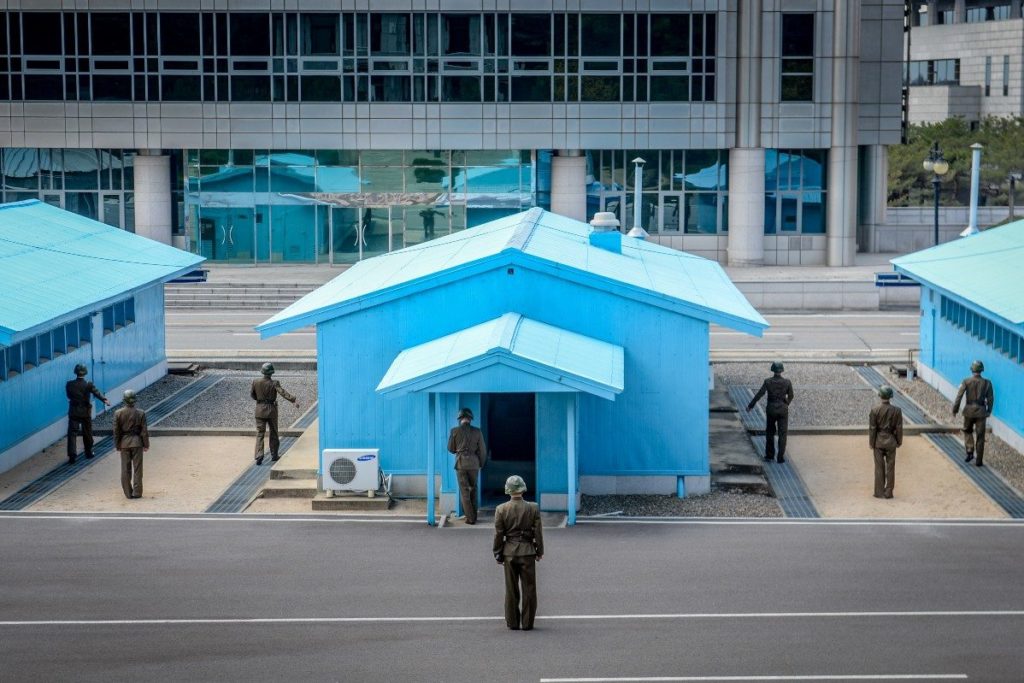
After lunch, we’ll begin our road-trip to picturesque Mt. Myohyang (Myohyangsan). This is a 2.5 hour drive filled with countryside scenery providing a great window into rural North Korean life.
On arrival, we’ll join the scenery as we hike the Manphok Valley trail , an area popular with picnicking locals and filled with dense forest, waterfalls and temples with great views. Bring comfortable shoes. All hiking is optional and at your own pace. Manphok Valley is a return route, there’s no obligation to reach the peak. Views are beautiful throughout!
We’ll then check in to the Hyangsan Hotel , North Korea’s self-confessed best hotel, with striking pyramid design nestled within the mountains. The facilities here are world-class with amenities including swimming pool, spa and massage facilities, barber and a bar with pool tables and ping pong!
Overnight at the Hyangsan Hotel
DAY 5 – MT. MYOHYANG
Our day begins with a visit to the International Friendship Exhibition , a massive complex housing the gifts given to the Great Leaders by foreign dignitaries. Gifts are displayed in over 150 rooms, everything from gem-encrusted swords to tea sets, bullet-proof vehicles and basketballs signed by NBA stars Michael Jordan and Dennis Rodman.
We’ll then visit the ancient Pohyon Buddhist Temple founded under the Koryo Dynasty and which remains active with practicing Korean Buddhist monks today.
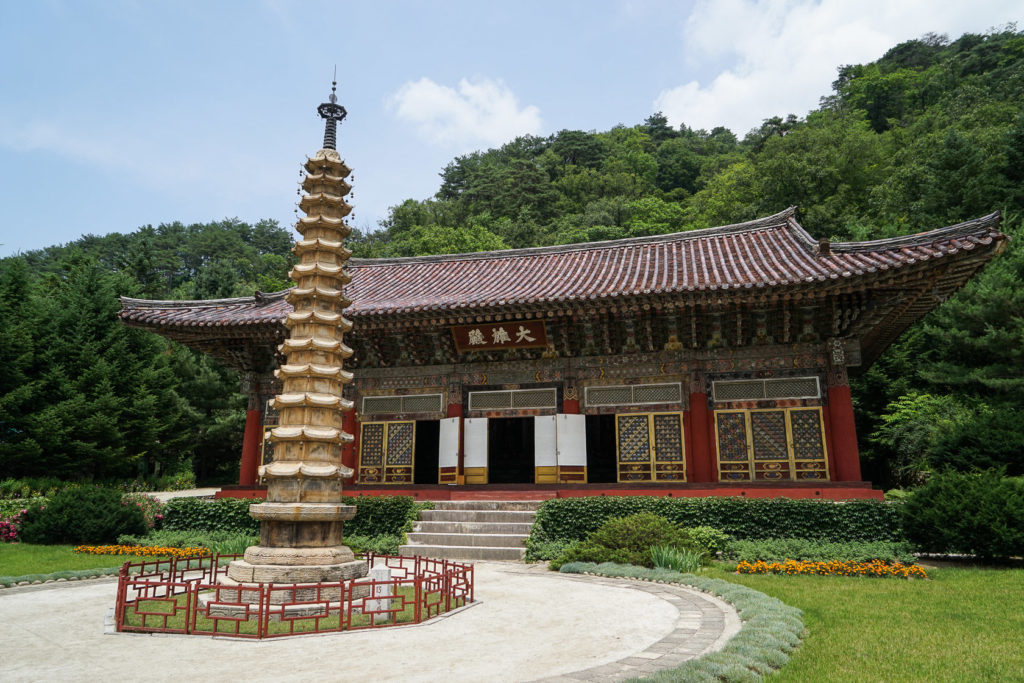
We’ll continue our journey to the city of Pyongsong. Pyongsong is often referred to as the ‘Silicon Valley’ of North Korea due to its role as a major hub for science and technology research.
Drop in on an English class at Pyongsong Primary School where we will get to meet and interact with the students (school supply donations are very welcome!) The students here will also be eager to show off their sporting skills against you! We’ll then visit Pyongsong Square , the central square of the city headed by two grand monuments of the Great Leaders. It is customary to lay flowers here.
On return to Pyongyang, dinner will be aboard the Taedonggang Dining Boat ! Enjoy views of Pyongyang’s most iconic landmarks and an upbeat performance as we cruise the river Taedong.
DAY 6 – FAREWELL
Morning departure to Beijing. Estimated time of arrival is 11:35am local time, although flight times are subject to final confirmation. Please reserve connecting flights departing after 15:30 pm local time, to allow sufficient time for immigration/customs clearance, baggage claim and re-check-in. Timings to be confirmed.
This itinerary is subject to change at any time.
What’s included in this tour:
- DPRK visa fees and handling
- Round trip ticket from Beijing to Pyongyang on Air Koryo
- 5 nights’ DPRK hotel accommodations (double occupancy, 4 stars)
- Meals as indicated
- Coach/car transportation in DPRK
- Two local English-speaking Korean guides
- One local driver
- Admission fees (except those listed under exclusions)
What’s not included in this tour:
- Round-trip airfare to Beijing from home country
- Beijing hotel accommodations
- Chinese visa fees and processing, if applicable
- Travel and medical insurance
- Personal expenses (laundry, telephone, etc.)
- Extra drinks during meals (one complimentary beer included)
- Beer at microbreweries (1-3 EUR per mug)
- Extra a la carte items incurred during meals
- Tips for guides and drivers
EXCLUDED ENTRANCE FEES FOR OPTIONAL EVENTS
Entrance fees are priced in EUR but RMB and USD accepted.
- Elevator to the top of the Juche Tower, 5 EUR
- Elevator to the top of the Arch of Triumph, 5 EUR
- Flowers to be laid at the Mansudae Grand Monument, 3-5 EUR
- Pyongyang circus (if playing): 20 EUR
- Taedonggang Dining Boat: 10 USD
- Meari Shooting Range: rifle and per bullet fees apply
- Kaeson Amusement park entrance and rides, approximately 1-3 Euros each
For more information on the booking process, see How to Book a North Korea Tour See Terms and Conditions for our refund policy and other disclaimers.
There are no reviews yet.
Your email address will not be published. Required fields are marked *
Your rating Rate… Perfect Good Average Not that bad Very poor
Your review *

Popular Experiences
The dprk classic – new years eve special – 5 nights.
Join us in Pyongyang for the 2024/25 countdown on this extended tour of North Korea for New Year’s Eve and beyond! This special tour will see you on Kim Il Sung Square alongside thousands of locals for New Year festivities, which [...]
The DPRK Highlights – Party Foundation Day Special – 4 Nights
In this special 4-night tour of North Korea, join the festivities of Party Foundation Day on October 10 including a mass dance, and discover the highlights of this fascinating country! We’ll tour the major political sites in Pyongyang and take a [...]
Ski and Snowboard North Korea – Kim Jong Il Birthday Special – 7 Nights
This is your chance to ski the fresh-power slopes of North Korea! See the grand monuments of Pyongyang, visit the Korean Demilitarized Zone (DMZ), spend time at the Masikryong Ski Resort, and be in the capital for the major festivities [...]
Best North Korea Tour Companies
Search 5 North Korea tour operators and travel companies, with 0 reviews.

Intrepid Travel
Health Safety +
Featured North Korea Trips

Geckos Adventures

Air by Pleasant

Urban Adventures
5 match your criteria (1 - 5 shown)

View North Korea trips
Plan your North Korea trip
Related Trips and Tours
Trip planning.

In a country where all ideology exists to serve the ruling regime, statues, portraits and murals of the DPRK’s God-like former leaders Kim Il-sung and Kim Jong-il are omnipresent.
Alongside them are an almost endless collection of Cold War-inspired monuments dedicated to the Workers Party of Korea and to revolution and resistance. Propaganda posters and slogans that declare the nation’s march towards inevitable victory are the only form of advertising.
See Also: The Best Books About North Korea
Nowhere is all this more on show than in the nation’s showpiece capital, Pyongyang . The home of the country’s most elite and loyal citizens, Pyongyang is the epicentre of the North Korean regime.
No visit to North Korea is complete without a visit to the northern side of the infamous Demilitarised Zone , the heavily armed Korean border known as the DMZ.
Nearby, the ancient city of Kaesong , the capital of Korea for almost 500 years, retains many historic sites granted UNESCO World Heritage status.
To the north of Pyongyang are the spectacular mountains of Myohyangsan . The beaches around the east coast near Wonsan attract a growing number of international tourists.
On the border with China in the far north is the sacred Mount Paektu , dominated by the stunning Chon Lake, which is also an unlikely ski resort.
Is it Safe to Visit North Korea?

Though visiting North Korea is not completely free from risk, all tourists are treated as welcome guests in the country. Incidents involving tourists getting into trouble in North Korea have been high profile but are incredibly rare.
Of course, there are some very important rules to follow and visitors to the DPRK should always behave appropriately, especially when visiting sites connected to the Kim regime. Yet on the whole, tourists in North Korea are valued by the authorities and will never be put in a position of harm.
Respect the Regime and Do Not Question the Historical Narrative
Visiting North Korea means having to accept the DPRK’s version of events regarding the history of Korea.
Almost everything you’re told regarding the history of the DPRK is likely to be heavily biased, wildly inaccurate and sometimes completely made up . Visitors with a deeper knowledge of the Korean Peninsula, and the Korean War in particular, will often need to hold their tongue. North Korea’s version of events is not up for debate.
All visitors to the DPRK also need to be aware that criticism of the North Korean leaders will not be tolerated . This includes the current President, Kim Jong-un, but especially applies to Kim Il-sung, the founder of the DPRK, and his son and successor, Kim Jong-il.
Criticism of any of the Kims is a serious offence. Any discussions of the leaders should always be complimentary or at least civil. If you have a genuine (and safe) question to ask about the Kims then do feel free to ask your guides.
If you think a question might be borderline, play it safe and wait until you are somewhere you can Google it. Also be aware that you will be expected to bow in front of the many enormous statues of Kim Il-sung and Kim Jong-il that you visit.
Tour Packages to North Korea

Travel to the DPRK is only possible through a handful of well-established companies that specialise in tours of North Korea . The most well-known company that offers tour packages to North Korea is Koryo Tours , who have organised tours to the DPRK since 1993. Other well-established tour companies to consider are Regent Holidays and Uri Tours .
There are only two ways to enter North Korea , both of which are via China. The longer option is a 25 hour train journey from Beijing. The shorter route is a two hour flight from Beijing’s Capital International Airport on North Korea’s state-owned airline Air Koryo.
When arranging your trip your tour company will ask which mode of transport you’d prefer and the costs of the flights or train tickets will be included in the total cost of the package.
Choosing a Group Tour or a Private Tour of North Korea
Tour companies can arrange group or private tours to North Korea . All tours are led by North Korean guides who are appointed by the authorities in the DPRK. Your tour company will organise your North Korea itinerary, travel arrangements to and from Pyongyang, and take care of all required visas.
Whilst more expensive than group tours, arranging a private tour means that you’re likely to get a lot more out of your visit to North Korea.
On a private tour your North Korean guides will be dedicated to you alone, meaning that you will receive a much more personalised service, allowing you much greater insight into the places you visit on your North Korea tour. You’ll also generally have more time to spend at specific sites, plus you’ll be in a smaller vehicle, which allows you to get surprisingly far from the beaten track.
Group tours usually consist of around 10 or 20 people who will all follow the same itinerary travelling by coach within North Korea. While it’s a less personalised agenda, group tours are more affordable and you’ll still get to see many of North Korea’s highlights.

Choosing Your DPRK Itinerary
We booked a private tour for our 10 days in North Korea. Choosing a private tour allowed us to create a trip more tailored to what we were interested in seeing in the DPRK.
As well as the more famous sights in the DPRK, many of the stops scheduled in our North Korea itinerary were mandatory . In every tour there will be visits to schools, universities, factories and farms that the regime wants Western visitors to see as part of their North Korean tour.
Our 10 Day North Korea Itinerary
This is the breakdown of our ten day North Korea itinerary:
Day 1: Arrival in Pyongyang from Beijing Day 2 & 3: Two days spent in Pyongyang, driving to Kaesong at the end of day three Day 4: Kaesong City and the DMZ Days 5: Return to Pyongyang via Pakyon Waterfall, Sariwon and the West Sea Barrage Days 6 & 7: Two days in Pyongyang, including the Day of the Sun Day 8: Drive north to Mount Myohyang via Pyongsong and the Paeksang Pavilion Day 9: Visit the Pohyon Temple, International Friendship Exhibition and Myohyangsan. Drive back to Pyongyang. Day 10: Check out and depart Pyongyang for Beijing.
10 Days in North Korea: Day 1
Arriving in pyongyang.
Though tempted by the adventure and intrigue of arriving by train, we chose the convenience of the short flight from Beijing to Pyongyang on Air Koryo.
Despite the airline’s less than wonderful reputation and the plane’s dear need for some TLC, the two hour flight was noticeably smooth and trouble free.

The plane’s tired décor reflected its age; a few chair backs comically slid backwards of their own accord as we began to take off. The first taste of North Korean propaganda begins on board.
Along with the infamous Air Koryo burgers , copies of the English language Pyongyang Times were distributed and eagerly consumed by the flight’s international cast of passengers.
Archaic flip-down TV screens silently played dated footage of a colourful and abundant DPRK. As we began our descent, the beige fields that surround Pyongyang are blanketed by dull grey skies.

Pyongyang’s Sunan International Airport and a copy of the Pyongyang Times
On arrival in Pyongyang , there’s no immediate sign that we have landed anywhere out of the ordinary. Pyongyang’s recently refurbished Sunan International Airport is modest yet modern, consisting of three bright and airy terminals.
Once through passport control, stern customs officials inspect the luggage of all new arrivals, including phones, laptops, tablets and anything vaguely electronic. Books are also checked, for their subject matter and for anything hidden between the pages.
Meeting Our Guides and Driver at Pyongyang Airport
Once customs are satisfied with our luggage, our two female North Korean guides introduce themselves. Immaculately dressed, both are full of smiles and genuinely friendly. There’s around a five year age gap between them, and they seem more like sisters than work colleagues.
Outside the airport we’re introduced to our driver, a warm, quiet and friendly man in his forties. The three make an excellent team and will come to feel more like companions rather than guides over the course of our trip.
* To be on the safe side, we’ve decided against posting the names or any photos of our guides and driver, on the incredibly slim chance that the way that we portray them is spotted by their superiors and considered inappropriate in any way. Apparently this has been known to happen in the past, so we’ve decided to play it safe.
Driving into Pyongyang

We drive into Pyongyang underneath grey skies and drizzle. There is little alongside the main road that leads into the city from the airport except brown barren fields, divided into neat segments. Leafless trees line the wet road, which is largely free of traffic.
Despite months of planning and preparation, finally being in North Korea feels completely surreal. No matter how much you read about the DPRK, or how many documentaries or news reports you see, nothing fully prepares you for the feeling of being in North Korea.
As if opening a pop-up book, Pyongyang suddenly appears out of nowhere. Very few places shine under such grey and damp conditions, but it’s hard to avoid the initial impression that Pyongyang looks a little bleak. The only colour comes from the aging housing blocks badly painted in a variety of fading primary colours.
A First Visit to Kim Il-sung Square

By now it’s late afternoon. Our guides suggest we stop in a cafe to confirm the plans for each day of our itinerary. Over strawberry tea we plot out the week, and then drive to a grey and wet Kim Il-sung Square .
If Pyongyang is North Korea’s showcase capital, then Kim Il-sung Square is its stage. Kim Il-sung Square is the location for the many military parades and celebratory mass rallies North Korea is famous for.
Thousands of tiny dots and numbers are sprayed onto the floor of the enormous square, markers for the attendees at the highly choreographed rallies.
The flags of North Korea and the Workers Party of Korea stand on top of the government buildings that frame the square. Under grim grey skies, the mammoth empty square looks more than a little dystopian.
Capping it all off are the huge portraits of Kim Il-sung and Kim Jong-il that hang from the imposing People’s Grand Study House opposite the square.
Their matching glasses and grins will become very familiar in no time at all. Images of both men are virtually everywhere in the DPRK.
Checking In at the Yanggakdo Hotel

Almost all foreign visitors to Pyongyang stay in one of two hotels, either the Koryo Hotel or the Yanggakdo International Hotel , where we’re based each night we’re in the capital.
With 1001 rooms, the Yanggakdo Hotel towers over Pyongyang from an island in the middle of the Taedong River. Though the rooms show a few signs of age, the Yanggakdo Hotel is meant to impress.
The dazzling entrance and Reception lobby makes a fantastic first impression, flanked by coffee shops, restaurants and bars.
In the basement is a casino, a bowling alley and more bars. On top of the building is a revolving restaurant, though it is noticeably static on the one night we head up for drinks.
Day 2 in the DPRK: Sightseeing in Pyongyang
Following breakfast in the Yanggakdo Hotel’s jaw-dropping and palatial dining hall we meet our guides in the lobby. Our schedule for our first full day of our North Korea tour is jam packed with some of Pyongyang’s most famous sights.

The Mansudae Hill Grand Monument
We start the day at The Mansudae Hill Grand Monument , the official name of the famous bronze statues of Kim Il-sung and Kim Jong-il, North Korea’s two former leaders.
It is impossible to overstate the DPRK’s devotion to the mythology of Kim Il-sung and Kim Jong-il , of which the Mansudae Hill Grand Monument is just the tip of the iceberg.
As part of their cult of personality, North Korean’s are taught from birth that Kim Il-sung and Kim Jong-il are gods amongst men, admired and adored the world over. Kim Il-sung especially is considered as much more than just a former head of state.
Even after their deaths their official titles are the Eternal President and the Eternal Leader of the DPRK. As we walk towards the two statues our guide states as fact that Kim Il-sung “is the sun”. Such a statement seems incredulous to the unindoctrinated.

A carefully cultivated state-controlled history of the Kims portrays both men as the nation’s benevolent father figures. In all of the thousands of portraits and statues of the Kims all over the country, they are always smiling and happy, often surrounded by loving admirers.
At 22 metres tall the statues at Mansudae Grand Monument are breathtaking in their scale and audacity. The statues are an imposing symbol of the power and of the reach of regime and the Kim dynasty.
On the road that passes in front of the statues is a speed limit of just 30 kilometres an hour, so that deference can be paid to the Kims as drivers slowly trundle past.

On either side of the two statues are two dioramas dedicated to the anti-Japanese resistance movement and the DPRK’s socialist struggle. Both consists of statues of heroic fighters and revolutionaries progressing towards victory.
As is expected of us, we bow in front of the leaders and place the plastic bouquet of flowers we were told to buy just before we arrived on the pile at their feet.
We’re the only Westerners here amongst a group of formally dressed North Koreans who have braved the rain. Our guide explains that they are a wedding party, with the bride dressed in the bright vibrant colours of North Korea’s national dress. According to our guide all newly married couples in Pyongyang visit Mansudae Grand Monument as part of their wedding day celebrations.
The Grand People's Study House
Next we’re taken to the Grand People’s Study House , the elaborate name for Pyongyang’s main central library. Built in the style of a traditional Korean palace, we’re met by a phenomenal portrait of Kim Il-sung in the library’s grand grey marble entrance. A guide from the Grand People’s Study House shows us around.

A genuinely impressive building, there is clearly an ulterior motive behind our visit, which is to portray the country as enlightened place of open learning and free thinking. There will be many similar trips during our 10 days in North Korea, each one an attempt to dispel the outside world’s perceptions of the DPRK.
We’re taken through a massive main lobby of marble and thick columns. In various study rooms are a collection of fairly modern computers, all connected to the library’s own catalogue system or the North Korean intranet .
In one room are books in many different languages on a variety of topics, from Swedish cooking to Photoshop manuals in Chinese. We drop in on a busy English lesson and are told that all of the courses held at the People’s Grand Study House are free and are open for all.
Next we’re taken in to a music room. The guide explains that students can come here whenever they want to relax and that they can listen to any of the music that’s in the library’s collection. The room is empty and there are several rows of desks, each with an old-school hi-fi stereo.

A member of staff steps forward with a nervous smile. “The Beatles” she says, referring to the battered CD case in her hand. She pops the CD into a stereo and puts on track 17.
Two and a half awkward minutes of Yellow Submarine follows, before it’s decided that we’ve all heard enough. Clearly not a fan, our younger guide doesn’t hold back. “That was awful”.
With The Beatles cut short, we step outside onto an enormous balcony with a wonderful view of central Pyongyang. As we approach early afternoon the grey skies are trying to lift over Kim Il-sung Square and, on the opposite side of the Taedong River, the Juche Tower.

Food as Propaganda
Next we head for lunch in one of the many restaurants around Pyongyang that are approved for tourist groups. In a country that has known terrible famine and that still relies on international aid programmes , meal times for tourists are also a part of the country’s propaganda drive.
Every meal we are served during our 10 days in North Korea is deliberately enormous. Each consists of around twelve side dishes served before a massive main course. The only possible assumption is that meal times are meant to send a message that food is plentiful in North Korea.

Our first dinner is Pyongyang cold noodles , a speciality of the DPRK, alongside a huge spread of side dishes, known as banchan in Korean. The side dishes alone are enough to feed a small army, and when the cold noodles arrive they’re just as gargantuan.
Our guides and driver eat with us most days. The two petite guides eat like horses, capable of wolfing down meals in a matter of minutes. It is genuinely impressive to witness.
The Artists of the Mansudae Art Studio

After lunch we’re taken to the Mansudae Art Studio . The Mansudae Art Studio’s only remit is to create state approved propaganda and heavily romanticised artworks of life in the DPRK. According to our guide, over 1000 artists work in the Mansudae Art Studio.
The many paintings, murals, sculptures and iconic posters found in every city and town in the DPRK are created here, including the two Kim statues at the Mansudae Hill Grand Monument.
The artists have even carried out lucrative commissions overseas. Artists from Mansudae have created bespoke monuments in such unlikely places as Mozambique, Botswana and Namibia .

The complex is enormous and various examples of their grandiose artworks are spread around the studio’s grounds. Huge murals of both Kims adorn the walls of the building, alongside fantastic bronze statues of the pair on horses.
We call in to two studios, where the artists are both working on beautiful paintings of rural scenes. There must be worse ways of making a living in North Korea, but the lack of artistic freedom must surely become infuriating over time.
Taking a Ride on the Pyongyang Metro
Nearby is Puhung Metro Station, where we start our three station ride on Pyongyang’s famously ornate underground.
Heavily influenced by the spectacular Moscow Metro, and one of the deepest underground systems in the world, a ride on Pyongyang’s Metro has become an iconic part of any visit to North Korea.

On the escalator to the platform, children stop and stare at the Western faces as they pass as their parents stare straight ahead. Other commuters bury their heads in newspapers, books or their smartphones , just as if they were anywhere else in the world.
When we finally reach the bottom of the escalator, the sight of the platform is truly breath-taking; marble walls are lit by sensational ruby chandeliers. The platform is vast, with the two tracks seemingly an afterthought. Clearly designed as a spectacular statement, the station feels more like a ballroom than a transport hub.

On the walls of the station are colourful mosaic murals of happy workers, all overseen at the far end of the platform by a smiling Kim Il-sung.
On the platform commuters gather around the pages of the daily newspaper of the Korean Workers Party, the Rodong Sinmun .
A train rolls in to the station and we take a seat alongside the other passengers, alighting a few stops later at Pongwa Station. The trains used on the Pyongyang Metro are a little more sombre than the stations’ platforms.
The majority date from the 1980s, where they were originally used on West Berlin’s U Bahn network. At the end of each train compartment are the grinning portraits of Kim Il-sung and Kim Jong-il.

A Musical Performance at June 9th Middle School
Our driver is waiting for us outside Pongwa Station and we move on to see a musical performance by students at June 9 th Middle School .
An English teacher acts as our guide and tells us with pride that the school was built on Kim Il-sung’s orders, and that he and Kim Il-Jung both visited the school a number of times.
It’s evident that the school benefits from its favourable connection with the Supreme Leader. From the outside the school looks just like any decent secondary school in the west, aside from the portraits of the Kims that hang above the entrance.
On the impressive synthetic pitch the school’s brass band gives a short rousing performance whilst other pupils kick a football around on the basketball court.

We’re led inside to a room that displays the history of the school. The main focus is the school’s close connection to the Kims.
At the centre of the room is a photo of Kim Il-sung voting in elections for the school’s headmaster. Presumably whoever he voted for won. As is the custom in North Korea, the ballot box he used is now on display under a protective Perspex box.
We head upstairs to a small theatre for another musical performance. On stage a rotating group of around 20 pupils sing a collection of traditional North Korean songs for us and two groups of Chinese tourists. They also perform a perfect rendition of a traditional Chinese folk song, much to the delight of the Chinese visitors.
Taking a Walk in Ryomyong New Town
From the school we drive to Ryomyong New Town , a district of Pyongyang that the DPRK is keen for tourists to see. As we arrive in Ryomyong, our guides suggest a walk. We’re dropped off by our driver and we stroll the short distance to our restaurant for the evening.
Ryomyong New Town is an area that has been transformed in next to no time at all on the orders of President Kim Jong-un. We’re told that dozens of old housing blocks were demolished and replaced by modern high rise apartments with futuristic designs .
It’s claimed that the whole project was completed in less than a year, and that the apartments are mostly for lecturers and staff of the nearby Kim Il-sung University, the most prestigious university in the DPRK.

There is a steady stream of people on Ryomyong Avenue as we slowly walk towards the restaurant. The towering apartments are undeniably impressive, a huge departure from the low rise Soviet-inspired housing blocks seen across much of the city.
They’re all designed in an unconventional architectural style that is perhaps unique to the DPRK, and all feature a pale pea green exterior, seemingly the colour scheme for Ryomyong.
Having now had a full day in Pyongyang, it’s possible to get a different take on the city than the first impression formed under the grey skies and rain of the day before. It seems clear that the city, and probably the whole country, is at some kind of crossroads between the past and the future.
There are signs of modernity everywhere; though nothing like the gridlock that plagues most Asian capital cities, there’s plenty of traffic on Pyongyang’s streets. Taxis are commonplace too.
Whilst public transport is cramped and crowded, electric bicycles are surprisingly common, suggesting that there is a wealthy consumer class in Pyongyang. Nearly everyone is glued to a smartphone.
Interestingly, almost every apartment we see has a solar panel hanging from a window, which implies that state provided power is still unreliable and that people are trying to find their own solutions.
Whilst allowing it’s citizens a degree of self-sufficiency and tolerating a level of free enterprise , it’s clear that the regime still has total control of North Korean society.
Day 3 in North Korea: Pyongyang and Kaesong
Mirae future scientists street.
The bulk of our third day in North Korea is to be spent in Pyongyang before driving south to the city of Kaesong in the late evening. The day begins with a walk around another of Pyongyang’s modern showpiece neighbourhoods named Mirae Scientists Street .
Just as with Ryomyong, Mirae Scientists Street is another recently redeveloped district featuring a glut of futuristic and colourful apartments.
Also known as Future Scientists Street, the area is supposedly a symbol of Kim Jon-un’s wish for the DPRK to place a greater emphasis on scientific, technological, and above all, nuclear development.

We’re told that the apartments on Mirae Scientists Street are allocated to lecturers and students at the nearby Kim Chaek University of Technology.
With their curved balconies and soft rounded edges, and decorated in greens, blues and oranges, the apartments and tower blocks are another huge leap forward from Pyongyang’s aging Soviet era housing blocks. An unwitting example of retrofuturism , the whole area looks as if it has been inspired by The Jetsons.
The Arch of Triumph
Next we move on to something much more typically North Korean, the Arch of Triumph . Based on Paris’ Arc de Triomphe, Pyongyang’s arch honours Kim Il-sung’s leading role in the Korean resistance to Japanese occupation.
According to North Korea’s version of events, Kim Il-sung almost single-handedly overthrew the Japanese occupation of Korea, ignoring the pivotal roles played by the likes of the Soviet Union and China.

In a typical display of Communist one-upmanship, the Arch of Triumph is 10 meters taller than its Parisian counterpart. Built in 1982, the Arch of Triumph straddles a wide avenue that’s largely free of traffic. The exaggerated grandeur of the arch gives it the look of a folly.
Inscribed into the arch are patterns of magnolias, the national flower of North Korea, and the dates of 1925-1945. According to North Korean teaching, these are the years of Kim Il-sung’s ultimately victorious campaign of resistance against Japan’s occupation of Korea.
The Victorious Fatherland Liberation War Museum
Our next stop of the day proves the exception to the rule that history is written by the victors. The Victorious Fatherland Liberation War Museum shows that with a state controlled monopoly on all news and information, history can be whatever you want it to be.

The Victorious Fatherland Liberation War Museum is phenomenal in every sense. Gargantuan in size, it’s hard to know if the museum’s guide – dressed in full military uniform – is exaggerating when she says it would take three days to see the whole exhibition.
The museum reflects the North Korean teaching that the DPRK was a blameless victim in the Korean War, cruelly invaded rather than the instigator , and fighting alone against the might of the United States army and several mercenary allies.
Here, the armistice that ended the war is painted as a massive victory for the DPRK over their hated foe rather than a truce agreed between both sides .
The jewel in the crown is the USS Pueblo , the US Navy spy ship that was captured in the seas off North Korea in 1968.
According to the museum’s guide the USS Pueblo entered North Korean waters 17 times before it was seized, though the United States maintains that the boat was attacked and unlawfully apprehended whilst in international waters in the Sea of Japan.

On board our guides tells us that the Pueblo was captured by a humble North Korean fishing vessel, which doesn’t account for multitude of enormous bullet holes that are proudly circled throughout the centre of the boat.
The written confessions of the captain and crew are proudly displayed, though no mention is made of the horrific torture used to acquire them. After 11 torrid months the 83 crew members were eventually returned to the United States in December 1968.
The interior of the Victorious Fatherland Liberation War Museum is a sight to behold. A recent renovation massively increased the size of the museum, adding a whole new building. The inspiration for the interior seems to have been a high end Vegas hotel.

The USS Pueblo; the written confessions of the crew and some of the ship’s machinery
Marking the entrance of the museum is an incredible statue of a Kim Il-sung. Around twenty feet tall, and standing at the top of a sweeping staircase, the Supreme Leader looks like a K-pop star .
Dressed in a gleaming white military uniform, he has more than a passing resemblance to his grandson, Kim Jong-Un. Our guides dutifully bow at his feet.
Given the ludicrous size of the museum we’re only shown a few highlights, mainly focusing on the heroic resistance of Kim Il-sung and the atrocities committed by the Americans.
The scale of the museum is magnified by just how empty it is. Aside from a few local groups, seemingly made up of school children and young military cadets, we’re the only people there.
Amongst the vast exhibition are a number of pretty grim photos of the innocent victims of the Korean War, mostly dead and badly mutilated bodies of women and children.
Another area shows the possessions and weapons of various Americans army officers left behind on battlefields. A number of photos of dead American soldiers are proudly displayed above a mock-up of a desolate battlefield featuring waxwork models of defeated US soldiers being eaten by ravens.

The final area we see is a huge circular room with an intricately detailed 360 degree painted diorama of the Battle of Taejon .
The diorama rotates as the battle scene slowly shifts to show the various gun fights, explosions and horrors of the conflict. The attentions of a large group of teenage school children are split between the story of the battle and the Westerners amongst their ranks.
Shopping at Pyongyang's Kwangbok Supermarket
After lunch we arrive at the Kwangbok Supermarket . The visit is clearly a propaganda exercise, showing off the wealth of goods on display here to sceptical outsiders .
Though we’re obviously being monitored by somebody somewhere, to our surprise our guides agree to meet us back near the entrance in an hour and let us wander around of our own accord.
Spread across three levels, the ground floor is a typical supermarket, whilst on the two upper floors are clothes, home furnishings, and other household goods. Walking around the supermarket affords a fascinating glimpse into the products that are available in North Korea.
Despite the well-publicised economic sanctions, the shelves are well stocked with everything you’d expect to see in any supermarket anywhere else in the world. The majority of products seem to be imports from friendly countries, such as Vietnam and China, alongside a handful of items produced in North Korea.
There’s plenty of fresh food, such as fish, meat and vegetables, and a number of global brands on the shelves too, including Heinz ketchup, Haribo sweets, and Heineken beer.
Upstairs a sign advertising Ikea furniture catches our eye. We take the escalator up a level and to our surprise various Ikea beds, wardrobes, desks and settees have somehow made their way into the country, assembled and displayed in the same manner as they are in Ikea stores. It’s fascinating and slightly depressing to see that Ikea’s reach has even managed to infiltrate North Korea.
Target Practice at Maeri Shooting Range
From Kwangbok Supermarket we drive to Maeri Shooting Range . In such a fervently militaristic country, our guides seem slightly amused that we’ve never previously fired a gun.
The firing range is in an area of Pyongyang dedicated to sport. On the same street are a number of gymnasiums, swimming pools, and a football stadium.

At the shooting range we’re taken through to an indoor rifle range. A couple of rifles are scattered around, and the all-female staff, again all dressed in military uniform, wait expectantly in the firing booths.
One of our guides quickly translates a few rudimentary instructions as a loaded rifle is placed in our hands. The tiny target wobbles around in the rifle’s viewfinder fifty metres away.
We’re given a round of ten bullets in which to hit the centre of the target, but it’s reassuringly difficult. The army-attired staff almost seem annoyed with us each time we miss the heart of the target.
We’re offered the chance of a second round, this time firing a sniper rifle. Despite having a much clearer viewfinder, the centre of the target proves even more elusive. It looks a lot easier in films.
After the rifles we try a third round, this time with a pistol. Even though the target is much closer at 25 metres it’s even harder to hit. We’re told that there’s an outdoor range where we can shoot live chickens but that sounds horrific and we politely decline.
A Tour of Mangyongdae Schoolchildren’s Palace

The final stop of the day in Pyongyang comes at the Mangyongdae Schoolchildren’s Palace , where our guides tell us children come after school to learn a host of extra-curricular activities.
A key piece of state propaganda, the Mangyongdae Schoolchildren’s Palace features on most trips to North Korea. The building is enormous and the interior looks like a school designed by children; rainbows are painted on the walls and planets and stars hang from the ceilings above the huge central foyer.
A young schoolgirl acts as our guide, and we’re taken from classroom to classroom to see various lessons in progress. There is an emphasis on the arts and lessons range from calligraphy, embroidery, dance, accordion and ajeang, a type of Korean zither.

Whilst the children are clearly all incredibly talented, it’s hard to imagine how the feel about being paraded in front of groups of tourists in this way.
The experience does begin to feel a little unsettling; by now we’ve been joined by several busloads of Chinese and Western tourists. Some of the children look a little unhappy at having to perform in front of jostling groups of tourists.
After the tour of the classrooms we’re taken into a huge theatre for an hour long performance by some of the school’s most gifted children.
A mixture of music and dance, accompanied by the school’s own orchestra, the show is a phenomenal display of the children’s exceptional talent.

The show is also another fascinating piece of propaganda. Whilst we can’t be certain of the content of the songs from the lyrics, the giant video screen in the background leaves little doubt of the concert’s theme.
The performances are enhanced with images of Kim Il-sung’s birthplace, Mount Paektu , military parades, and, oddly, fishing boats.
The Arch of Reunification
After the performance we start the journey south towards Kaesong . On the way we stop to admire the Arch of Reunification at the start of the Pyongyang-Kaesong Highway, also known as the Reunification Highway.
The arch, built in 2001, commemorates proposals made by Kim Il-sung for the reunification of North and South Korea, and features two women in Korean national dress, one representing the North the other the South. Together they hold a globe featuring a map of the Korean Peninsula.

It becomes apparent that the regime constantly talks up the desire to reunify Korea though it seems far from being a real objective. With the benefit of an outside eye, it feels as though the division of Korea is used as a tool by the regime to stoke up a feeling of injustice and victimisation amongst the North Korean people.
Judging by much of what we’ve already seen, such as the Fatherland Liberation War Museum, where so much money and effort has gone into telling a false narrative, the real goal of the North Korean regime seems to be to self-preservation and to keep things exactly as they are.
Driving to Kaesong on the Reunification Highway
Immediately after the Arch of Reunification, Pyongyang stops dead. The city is replaced by an endless patchwork of near empty mustard-yellow fields. The journey along the highway reveals a different side to North Korea.
As the city disappears behind us our guide quickly gives us a lesson in North Korean farming; the main crops grown are rice and maize; only around 20% of the land in North Korea is arable; crops are planted by hand and by machine; there are two types of farms, state owned and cooperative farms.
To the untrained eye the fields we pass on the bumpy highway all appear pretty barren. There’s a constant drip of people walking with intent along the road and across the fields at every stage of the entire journey.
We pass several small villages of traditional Korean hanok-style houses far off in the distance, but it’s impossible to tell where people are going or where they’ve come from.

The surface of the four lane highway is dreadful, reminiscent of a neglected airport runway. Virtually free of any other vehicles, bicycles and pedestrians are by far the main source of traffic.
Occasionally a group of workers line the side of the road, either sweeping away leaves or filling in some of the huge cracks in the road in vain.
It takes close to three hours to drive the 160 kilometres between here and the city of Kaesong, just short of the Korean border. There are four checkpoints to pass on the way, a reminder of the restrictions on the freedom of movement in North Korea.
Every checkpoint is manned by a young solider, each one barely out of their teens, with a rifle strapped across his back. On occasion it looked as though a few of the soldiers seemed afraid of the responsibility of their position.
It’s after 9.00pm by the time we eventually arrive in Kaesong. Ours is the only vehicle on the enormous six lane road that leads into the city from the highway.
Two illuminated bronze statues of Kim Il-sung and Kim Jong-il stand over the city centre. With almost no street lighting anywhere the rest of the city is in near total darkness.

Arriving at our hotel we’re told that there’s one hour of hot water at night, between 9.00 and 10.00pm, and another hour between 7.00 and 8.00 in the mornings.
As we reach our room, a bright red sign in a golden frame hangs above the door. Our guide translates the sign for us; Kim Il-sung stayed in the very same room in July 1972.

Day 4 in the DPRK: Kaesong and the DMZ
The tombs of king kongmin and king wanggon.
The next day we wake to beautiful sunshine but no hot water, and after breakfast it’s a twenty minute drive to the first stop of the day, the Tombs of King Kongmin and King Wanggon .
Though most commonly known for its proximity to the Korean border and the DMZ, Kaesong has a long and rich history. Before Seoul, Kaesong was the capital of Korea for almost 500 years.
During the Korean War, the United States planned to keep Kaesong in South Korea and though still badly damaged, the area avoided the worst of the bombing campaigns. As a result a fair few examples of the region’s ancient history survived intact.

Many areas around Kaesong are designated as UNESCO World Heritage sites , including the tombs of King Kongmin and King Wanggon. The tombs are just a few miles apart from each other along a dusty mountain road to the east of Kaesong.
The tomb of King Kongmin stands at the top of a steep hill surrounded by beautifully manicured grounds. Next to the tomb of King Kongmin is the tomb of his wife, Queen Noguk.
Granite statues of warriors, officials, tigers and sheep watch over the tombs. Both tombs date from the 14 th century and are remarkably well preserved, though the precious relics housed inside the tombs were looted by the Japanese sometime in the early 20 th century.
Back along the mountain road towards Kaesong is the solitary tomb of King Wanggon . Originally built in the 10 th century, King Wanggon’s tomb was badly damaged during the Japanese occupation of Korea, and the present tomb has been greatly restored.
The statues here look noticeably smoother and less aged than at the tomb of King Kongmin, and stand at the end of a path marked by a traditional Korean gate.
Visiting the North Korean Side of the DMZ
After the appetiser of the tombs it’s on to the day’s meaty main course. Visiting the Demilitarised Zone from the northern side of the Korean border is a highlight of any visit to North Korea. Having visited the DMZ in South Korea , it’s a very different experience in the DPRK.
We drive back along the highway, past Kaesong, until we reach the approach to the entrance of the DMZ, a large gate painted in army camouflage green. In front of us are four busloads of Chinese tourists.
A unit of elite military officers flank the vehicles, and though the atmosphere is still pretty calm, it feels a little more serious.
Now inside the DMZ our first stop is the gift shop. Everything from hand printed posters, ginseng soap and even cans of Coca-Cola are for sale. The huge throng of Chinese tourists race around the shop as if they’re doing a weekly shop.

The signed Armistice Agreement that ended the Korean War and Kim Il-sung’s final signature carved into stone on the northern side of the DMZ
Soon, the North Korean army officer acting as our collective guide is ready to begin and we’re led through to a connecting room. Here he gives an incredibly fast synopsis of the division of the Korean Peninsula. He speaks so quickly that our guide can barely keep up with him to translate.
Predictably, the North Korean take on the Korean War and the subsequent creation of the DMZ is entirely different to that taught elsewhere. The general gist is that the DPRK were and continue to be blameless victims of American imperialist aggression.
Each time that it’s mentioned, by our guides or the Army officer, the country on the south side of the border is not called South Korea but always referred to as “the American side”.
Before reaching the Joint Security Area at the centre of the DMZ we stop at the Armistice Talks Hall and the North Korea Peace Museum .
The Armistice Talks Hall is a small room where initial meetings to attempt to end the Korean War began between North Korea and the United States Army in 1951. The discussions proved fruitless, and the war continued for another two years until an armistice was reached in 1953 .

That armistice was signed in the building next door, now called The North Korea Peace Museum. The agreements signed by both sides in 1953 remain on display on one side of the room.
Our guide points out the United Nations flag that still stands on one of the tables. She says that the Americans were so ashamed of their defeat in the Korean War that they preferred to hide behind the flag of the United Nations, rather than use their own.
As we wait to reboard our buses, the North Korean army officer leading the tour wanders over to us. He clearly knows our guides from their repeated visits to the DMZ. With a firm handshake and a broad smile he welcomes us to the DMZ.
He then jumps in our small van for the short drive towards the JSA. With a mischievous smile he says in Korean “You know, your country was on the other side during the Korean War?” This isn’t really what you want to hear from a North Korean army officer whilst inside the DMZ. After a dramatic pause he adds with a grin “But you are here now as friends of the DPRK, so everything is okay.”
We park up alongside the Chinese tourists at the rear of Panmon Hall , the main building on the north side of the JSA. It’s a peculiar feeling being back in such a strange place.
The DMZ’s deadly reputation remains at odds with the manicured gardens and plants that surround both sides of the rather basic utilitarian huts that straddle the Korean border.
As we approach the front of Panmon Hall we’re met by an unexpected sight. A group of tourists stand on the viewing platform at the top of Peace Hall on the southern side of the border.
Our guides tell us that it’s incredibly rare to see visitors on the south side of the border. Despite the tourists on the south side, there are no South Korean officers present on the opposite side of the border.
The sight of tourists across the divide causes quite a stir; our two guides can barely contain their excitement, and the army officers around us are clearly surprised. Once we’re inside Panmon Hall they pass a pair of binoculars around to catch a glimpse of who is watching us on the other side of the Military Demarcation Line.

By the time we reach the viewing area on the top floor of Panmon Hall the tourists over the way have been ushered back inside. Three North Korean guards stand in front of the door to one of the UN huts that sits over the borderline, and we’re not offered the chance to step inside.
Our new friend the North Korean army officer returns and asks if we hope to see a unified Korea. There’s only one possible answer given the circumstances. He declares that the unification of Korea is the dream of all Korean people and one that Kim Jong-un is working hard to achieve.
With that we’re ushered back towards our minivan. We say goodbye to the army officer and drive off for a lunch of ginseng chicken in a restaurant that was once the base for Polish and Czech officers stationed in the DMZ as part of the Neutral Nations Supervisory Committee . On a list of surreal moments during this whole trip to North Korea, eating chicken in the DMZ is one of the most bizarre.
Geting a Glimpse of the 'Real' North Korea
With the ginseng chicken polished off, we’re on to our next stop of the day. We drive for around an hour through some of the most remote parts of the North Korean countryside to reach our next stop, the Concrete Wall. It’s a fascinating and eye-opening ride but sadly taking photos out the window is not allowed.
We drive along a narrow country lane that winds past endless fields and tiny villages, places that you’d never imagine being allowed to see in North Korea. There is a constant flow of people on bicycle and on foot, all noticeably smartly dressed. Again it’s impossible to know where they’ve been or where they’re trying to get to.
As the only vehicle on the road this far into the countryside, we attract a lot of suspicious glances. Everyone on foot stops to stare in through the windows of our minivan as we pass, whilst those working in the fields look up to see who’s driving through. On more than one occasion a group of young children bow as our vehicle drives past.
The obvious conclusion to jump to is that only people with power and authority usually drive this deep into the countryside. When they spot Western faces looking back at them we’re met by looks of disbelief.
Though there’s no sign of complete destitution or famine always associated with North Korea, there is no disguising the fact that this is clearly an incredibly tough life.
Occasionally an ox trudges through a field pulling a plough, but most farm work is done by hand. People work in small groups or on their own, often knee deep and bare foot in muddy rice fields.
Young army recruits also seem to be tasked with carrying out agricultural work. Many of the young soldiers in khaki uniforms look like they’ve only just crept into their teens.
There are also young men in military uniforms on building sites, suggesting that despite the DPRK’s military first policy , the army are little more than a free source of labour.
A number of times we drive pass cyclists with a dead pig tied to the back their bicycle. Toddlers play in the mud as their parents work in the fields. On a few occasions we pass women hand washing clothes in rivers and streams alongside the road.
In a country that obsesses about how it’s portrayed to the outside world, it’s remarkable that we’ve been driven through a region so at odds with the image it tries to project of itself.
The Concrete Wall

Eventually we arrive at a lookout point on the edge of the DMZ that faces South Korea. We’re met by an older officer in military uniform and led into what looks like a classroom with a large painting of a section of the DMZ on the front wall.
The officer proceeds to give a short lecture about the Concrete Wall , a ten foot tall physical divide supposedly built by the Americans within the southern section of the DMZ.
Said to span the entire length of the DMZ, we’re told that the southern side of the Concrete Wall is sloped and covered in grass, meaning it can only be seen from the north looking south.

We’re taken outside to a viewing platform to see the Concrete Wall for ourselves. Several pairs of powerful antique binoculars are set up for us to peer through. A section of the wall is supposedly visible just beyond a small lake, and while there’s a tiny blur of grey that could pass as a patch of wall, it’s far from conclusive evidence.
What is visible are a number of army checkpoints on both sides of the border, displaying their respective flags, as well as army officers and vehicles patrolling the southern side.
It’s quite sad to see the two sides rather pointlessly facing each other off in this way. Otherwise the whole area seems oddly peaceful, just like any normal unspoilt rural landscape.
Koryo History Museum and Walking Through Kaesong
We drive back through the countryside and return to the outskirts of Kaesong. We’re given a quick tour of the Koryo History Museum , another UNESCO World Heritage site. The museum’s traditional 17 th century buildings were once the Sungyun Academy, dedicated to Confucian studies during the Koryo era.

The museum’s collection features an assorted number of artifacts and displays related to life during the Koryo Dynasty in Korea.
With a typically North Korean approach to historical accuracy, our guide points to one display that confidently declares that Koreans invented gunpowder.
We return to the centre of Kaesong and end the day with a short stroll in the late afternoon sun towards our restaurant.
We wander along a main road lined with traditional hanok houses, clearly one of the areas of Kaesong that came through the war relatively unscathed.

At either end of the street is a propaganda poster glorifying the military and a collection of mosaic murals, each depicting the now familiar sights of Mount Paektu and Kim Il-sung’s birthplace.
Day 5 in the DPRK: Back to Pyongyang
Pakyon waterfall.
The next day we make the return trip from Kaesong to Pyongyang. The journey features a few detours and much more exposure to North Korea’s fascinating countryside.
The first stop of the day is Pakyon Waterfall . Hidden inside a thick forest of fir trees, the towering thirty-seven metre high waterfall dives into a small crystal clear lake at the bottom a cliff.

Huge ancient Chinese characters are etched into the cliff face all around the waterfall, dating from a time before the modern Korean alphabet came in to common use. It’s a genuinely beautiful part of the world, and a beauty not commonly associated with North Korea.
Our visit is the first time that our younger guide has been to Pakyon, and she’s unable to hide her excitement, running ahead of the rest of us to take selfies in front of the waterfall. The other guide shows us a video on her phone from when she and her husband brought their son here last year.
A Stop Off in Sariwon
From here we head back on the bumpy road, where we spend much of the day. It takes around two hours to reach the city of Sariwon . After a power cut affected lunch at the March 8 th hotel, we’re given a tour around the city’s agricultural university.
The entertaining vice principal of the university does his best to liven up what is undeniably a dry subject. He’s clearly quite smitten by our guides, which is more entertaining than the plastic models of giant sweet potatoes, tubs full of soil and numerous portraits of Kim Il-sung stood in fields.
The visit makes a drastic improvement just as we make our way towards the exit. In two days’ time it will be April 15 th , a national holiday to commemorate Kim Il-sung’s birthday.
Known as the Day of the Sun , this is one of the most important days in the calendar in North Korea. Various events take place to celebrate the day throughout the country, including sporting competitions.
As we make our way out of the agricultural university, two tug of war teams are preparing to tussle in front of the main entrance. They’re practicing for the main event which will take place on the Day of the Sun.

A team in yellow are from the agricultural university, whilst a team in blue represent a neighbouring rival university. There’s a big crowd gathered round in anticipation, and the vice principal, keen for us to see the teams in action, instructs them to get on with it.
The crowd and the two teams are slightly baffled by the sight of a couple of Western faces watching on, but spirits are high. Beneath a slogan that reads “Following the Marshall Forever”, the team from the neighbouring university wins the best-of-three practice session 2-0.
Sariwon Cooperative Farm
From here we drive to the other side of the city where the agricultural theme continues with a visit to a cooperative farm. From a viewpoint that overlooks the farm we can see neat rows of traditional farmer’s houses and well cultivated fields.
A local guide tells us that this is all down to the wisdom of Kim Jong-il who gave instructions for the best use of the land when he visited the city in the late 1990s.
We’re then taken to see what we’re told is a typical farmer’s house. We’re met at the front door by the home owner, a young woman whose relatives disappear through the back door as we enter.
On the wall in the front room are photos from her wedding day and of her graduation ceremony from a military academy in Pyongyang. A framed photograph of the whole family with Kim Jong-il in front of the house hangs alongside the official portraits of the two Kims.

A cooperative farm in Sariwon, and the interior of a farmers house.
From Sariwon we continue north to Pyongyang via the West Sea Barrage near the city of Nampo. It’s a couple of hours’ drive through more of the remote North Korean countryside.
Much of the journey passes along dusty roads through the now familiar sights of threadbare fields farmed by hand, the occasional ox and plough and young army officers toiling with shovels.
One section of the journey passes through a long stretch of genuinely beautiful scenery. Narrow roads snake around the mountainsides through uninhabited countryside framed by fir trees.
An unmanned checkpoint blocking the road is a reminder of the reality of where we are, our driver having to get out and shove it to one side to get past.
The road rises as we eventually approach the West Sea Barrage with wide sweeping views over the sea. The roads leading up to the West Sea Barrage is heavily industrial and much more reflective of North Korea.
We pass trucks piled high with weary workers and lorries hauling goods from the ships docked nearby. The military presence is high; our driver’s patience is well and truly tested by the time we reach the fourth manned checkpoint in less than 100 metres.
The West Sea Barrage
A visit to a barrage probably wouldn’t feature on many holiday itineraries, but this is North Korea, where epic building projects are milked for political and propaganda purposes.
Given the financial and logistical constraints that they face from the outset, a project like this is a minor miracle.

The West Sea Barrage and inside the barrage’s visitor centre
The West Sea Barrage separates the West Sea from the Taedong River, which continues from here all the way to Pyongyang and way beyond. The barrage separates the sea water with the river’s fresh water, whilst still allowing ships to pass.
Eight kilometres in length, the barrage took five years to build and has become an iconic symbol in North Korea. A visitor centre overlooks the barrage, where a typically histrionic video details the building of the dam as a superhuman achievement only possible here under the guidance of the Supreme Leaders.
Afterwards it’s a straightforward journey back to Pyongyang, passing through Nampo, a bustling port city bathed in almost complete darkness now that night has arrived.
Our younger guide doses off in the back of our minivan as we travel along the Youth Hero Highway. The other guide surprises us by apologising for the poor condition of the highways in the DPRK, an unexpected admission of imperfection that she blames on economic sanctions.
She then asks how the outside world viewed Kim Jong-un’s recent summits with President Trump . Diplomatically, we say that Kim came across as a statesman, and in a manner that made him appear on an equal footing to the President of the United States.
When pressed further, we add that Kim and the North Korean delegation showed that they wanted to achieve peace in the region and with the United States.
Our guide becomes visibly emotional at hearing a positive answer. Our conversation is cut short by another checkpoint which our guide has to get out and negotiate. As we roll back in to Pyongyang, she thanks us for our answers, and adds that she hopes the unfair sanctions against the DPRK will soon be lifted.
Day 6 in North Korea: Pyongyang
Kumsusan palace of the sun.
It’s Sunday in Pyongyang and the day that we visit Kumsusan Palace of the Sun . Once the official residence of Kim Il-sung, today it is where his body lies in state , along with the body of his son and successor, Kim Jong-il.
The most sacrosanct place in North Korea, visiting the Kumsusan Palace of the Sun is serious and odd in equal measure.
It’s clear from the way that everybody is dressed in the lobby of the Yanggakdo Hotel that the Palace of the Sun is on the agenda for almost all of the tourists in Pyongyang. Visitors are expected to dress smartly when visiting the Kim’s mausoleum. All of the tourists in the hotel lobby are smartly, if awkwardly, dressed.

It’s around a half an hour drive from the hotel to the Palace of the Sun. The complex is staggering in size, and the whole visit is carried out with a military efficiency. Entrance is staggered by tour group.
All possessions are left in a cloakroom and once past the metal scanners and body searches, a series of painfully slow travellators creep along a massive corridor towards the eternal leaders.
Framed photos of both Kims performing on-the-spot guidance line the walls beside the lurching travellators. Our guide explains that we’ll soon enter a room and bow in front of statues of the leaders.
We duly arrive, and the room is gigantic. Lit by seven colossal chandeliers, every surface is marble. The room is completely empty except for the enormous waxwork models of Kim Il-sung and Kim Jong-il. They’re flanked by the flags of the DPRK and the Korean Workers Party. A line in the marble floor marks the bowing point.
From here we’re ushered into a staggeringly palatial lobby. Stern faced security guards in military uniform watch over everyone. A lift takes up to the next floor, where we follow our guides along a series of gleaming marble corridors to the outer entrance to Kim Il-sung’s mausoleum.
Our guide explains the protocol; we’re to bow once at Kim il-sung’s feet, and as we walk around the coffin, again on the left side and a third time on the right hand side of the Eternal President’s body.
The huge square room is bathed in a deep red light, resembling an enormous photographic darkroom. Kim Il-sung’s embalmed body lies at the centre, draped in the flag of the Workers Party of Korea. We queue in a group of four and bow in unison as required when it’s our turn.
We then follow into an adjacent room filled with a multitude of honours, medals and titles awarded to Kim Il-sung during his lifetime at home and abroad.
There are dozens of domestic honours, seemingly given for the spurious reasons; many commemorate various anniversaries of the ending of the Korean War. One award is for the completion of the construction of a motorway.

The foreign honours and titles are bestowed by countries with an equally questionable approach to democracy as the DPRK. There are honorary doctorates and keys to various cities from countries such as Cambodia, Mongolia, Laos and Cuba as well as several former Soviet countries.
All are watched over by framed pictures of Kim Il-sung greeting other heads of state, such as Colonel Gaddafi , Chairman Mao and Robert Mugabe .
We then repeat the entire process one floor below for Kim Jong-il. His body lies alone in a red-lit room identical to his father’s. We bow at his feet and at his sides and then file out to see his collection of medals and honours, which are all identical to his father’s.
The final section of the Palace of the Sun is dedicated to the Kim’s modes of transport. It’s a rather unusual end to a very surreal morning. Inside huge rooms of more polished marble are a collection of a few of the Kim’s various vehicles. Hung on the walls of each room are framed photos of the Kim’s alongside their vehicles.
The first room features Kim Il-sung’s enormous green bullet proof train carriage. Both Kims preferred to travel by train , especially Kim Jong-il who hated flying.
On the wall is an electronic map showing every journey that Kim Il-sung took during his lifetime within the DPRK and overseas. The number of countries visited and the total distance travelled in kilometres have all been tallied up.
In the next palatial room is Kim Il-sung’s old black Mercedes, so clean it practically sparkles beneath the lights. In the following rooms are Kim Jong-il’s rides, starting with his own personal bullet proof train carriage and electronic map.
Kim Jong-il died of a heart attack in his train carriage in December 2011, which has been left supposedly as it was when he died, with his paperwork neatly stacked next to an Apple MacBook.
Completing the surreal experience are the final two rooms. The first features Kim Jong-il’s own black Mercedes parked opposite his golf buggy. In the centre of the second room is the Dear Leader’s personal boat, the size of a small Navy ship.
As we trundle back towards the exit on the travellators, large groups of Koreans are making their way in to pay their respects. The men are dressed in their best suits, whilst the women are all in beautifully coloured national dress.
We’re taken outside to take photos in the palace’s garden. On the front of the building are the two iconic portraits of the two men who lay at rest inside.
The Revolutionary Martyrs’ Cemetery
In keeping with the theme for the morning, next we drive to the Revolutionary Martyrs’ Cemetery , just a short distance away. Set in a hill high above Pyongyang, the cemetery is reserved for those credited with playing a decisive role in fighting the Japanese occupation of Korea.

The cemetery is typically grandiose in style; graves are set in rows of five, each marked by a solid bronze bust. The most important grave in the cemetery, at the centre of the graveyard’s main platform is that of Kim Jong-suk.
As the second wife of Kim Il-sung, the mother of Kim Jong-il and the grandmother of Kim Jong-un, her personal story has been modified and exaggerated to fit the desired narrative of the North Korean regime. Known in the DPRK as the Mother of Korea, we dutifully bow in front of her bust.
Ten Pin Bowling in Pyongyang
After a pretty heavy morning we head back the hotel for a few hours to relax. In the late afternoon we head back out into Pyongyang. In the strong afternoon sunshine we’re taken for a walk over the Okryu Bridge across the Taedong River. It’s the day before the Day of the Sun, and the centre of Pyongyang is busy with people.
Just next to Okryu bridge on the eastern side of the river is Golden Lane Bowling Alley . Bowling in Pyongyang is a common and popular stop on most tourist itineraries. After the intensity of the morning’s activities, it’s a nice way to finish off the day.

Golden Lane Bowling Alley is fairly quiet when we arrive. A few men play on one of the pool tables, and only a few of the twenty or so lanes are in use. At the far end a couple of pros have a lane apiece.
Despite insisting that they’re not very good at bowling we manage to convince our guides to join us for a game. It soon becomes apparent that they probably bring tour groups here pretty frequently as they both win with ease, which they modestly put down to luck.
Afterwards we cross town for another humongous meal at one of the tourist approved restaurants before returning to the Yanggakdo Hotel.
Day 7: Celebrating the Day of the Sun in Pyongyang
Kimilsunglia and kimjongilia exhibition hall.
Some of Pyongyang’s main highlights have been saved for our final full day in the capital. Today is the Day of the Sun , the birthday of Kim Il-sung and a national holiday.
Appropriately it’s a gloriously sunny day. We spend the whole morning in eastern Pyongyang, beginning with the Kimilsungia and Kimjongilia Exhibition Hall .
On the banks of the Taedong River, the exhibition hall, is dedicated exclusively for the display of the two flowers named after Kim Il-sung and Kim Jong-il.
Both flowers have become iconic symbols in North Korea; huge paintings of the kimilsunglia and kimjongilia flowers are displayed alongside main roads throughout Pyongyang and other cities in North Korea.

Though officially a holiday, it becomes clear that this isn’t a typical day off, but a time to publicly commemorate the Supreme Leader.
Crowds of people swarm the exhibition hall to see the multitude of Kimilsunglia flower displays laid out over two floors. Each display has been organised by governmental departments, ministries and various other branches of the North Korean state.
At the centre of each display, surrounded by a bounty of purple Kimilsunglia flowers, is always a reference to Kim il-Sung, usually a typically kind painted portrait or a model of his supposed birthplace in Mangongdae.
Another recurring theme in the displays are models of some of Pyongyang’s most famous landmarks, such as the Palace of the Sun or the Juche Tower, expertly carved out of blocks of polystyrene.
Whether it’s down to free choice or duty, the hall is swelling with people by the time we leave. Back outside in the sunshine our guide buys us all North Korean made ice-creams as the queue to see the Kimilsunglias stretches out into the street.
The Workers Party Foundation Monument

Just a few streets away is one of Pyongyang’s most recognisable landmarks, the Workers Party Foundation Monument . The monument was built to mark the 50 th anniversary of the founding of the Workers Party of Korea.
Symbolically, there is a clear unobstructed view from the monument to the statues of Kim Il-sung and Kim Jong-il on Mansudae Hill directly across the Taedong River.
The monument consists of three towering granite hands, each holding aloft the symbols of the Workers Party of Korea; the hammer represents the worker, the sickle denotes the farmer and a calligraphy brush for the intellectuals.
As part of the Day of the Sun celebrations, singers, musicians and dancers all perform in front of the Party Monument. Hundreds of people have gathered to watch, all dressed in their very best clothes.

Taking in the Views of Pyongyang From the Juche Tower
Next we drive the short distance to the Juche Tower , named after the ideology created by Kim Il-sung to promoted the idea of sustainability through personal self-reliance. Constructed to honour Kim Il-sung’s 70 th birthday, the central spire is built from 25,550 granite blocks, one for each day of Kim Il-sung’s life up to that point.
At the base of the tower are a number of plaques dedicated by sympathetic organisations from all over the world in support of juche.

For visitors, the Juche Tower’s most impressive attribute is the view of Pyongyang from the viewing platform just beneath the mighty red flame at the very top.
On stepping out of the lift you’re instantly met by a spectacular 360 degree view of the whole city, offering an incredible panorama of Pyongyang and the city’s main landmarks.
Facing western Pyongyang, the Juche Tower looks out across Kim Il-sung Square on the opposite side of the Taedong River. In the near distance, towering over the city, is the sci-fi pyramid-like structure of the Ryugyong Hotel.
The tallest building in North Korea, the Ryugyong Hotel also holds the title of the tallest unoccupied building in the world . Though construction began in 1987, North Korea’s economy has never been strong enough to finish the job, and it is yet to be completed.
As well as the main sights, the view from the top of the Juche Towers also allows the chance to peer in at some of the parts of the city that aren’t on the tourist route, especially the towers blocks in the suburbs on lesser visited eastern side of Pyongyang.

Mixing With the Locals at Moranbong Park
After lunch we cross back over the river for a walk through Moranbong Park . As with a ride on the Pyongyang Metro, a stroll through Moranbong Park is included in most visits to Pyongyang, offering the chance to rub shoulders with regular North Korean citizens.
Reflecting the spirit of the national holiday, there is a genuine party atmosphere in the park. The people here are clearly a part of North Korean’s elite.
Families and friends gather for barbecues washed down with plenty of soju, whilst some people sing along to the portable karaoke machines that they’ve brought with them for the day.

The largest crowd is underneath a pavilion in the heart of the park. A huge group of people have gathered to dance, and they seem to like the attention of the groups of Western tourists that are watching on.
As we watch the crowd dance a group of North Korean teenage girls giggle nervously as they surreptitiously sneak a photograph of themselves next to us.
An Orchestral Performance at Moranbong Theatre
We leave the dancing behind and stroll across the park for another of the trip’s more unexpected moments, an orchestral performance at the Moranbong Theatre .
The theatre is relatively modest in size but typically ornate. A gleaming white exterior is matched by the chandeliers and marble of the lobby.

The orchestral performance is wonderful, with an extremely talented group of musicians led by a rotating group of conductors.
As tourists we weren’t given any indication as to who the orchestra are or of any of the songs that they performed. Given that it’s Kim Il-sung’s birthday, and that all art in North Korea serves a political purpose, it’s safe to assume that the concert has a political message.
Watching a Mass Dance Outside the Kim Il-sung Stadium
The holiday celebrations continue after the show outside the Kim il-Sung Stadium, where hundreds of students have gathered to take part in a mass dance .
In front of a growing number of western and Chinese tourists, beautifully dressed young couples dance to traditional North Korean songs in an open space opposite the Arch of Triumph.
It’s a fascinating glimpse into the highly choreographed and structured way of life in North Korea. Under the sweltering afternoon sun, the couples dance along to several different songs.
A few of the Westerners join in and copy the dances, which appears a little disrespectful, though our guide says that each time this happens it brings joy to the North Koreans.

With a little time to spare we ask to return to Kim Il-sung Square to take a few photos now that the sun is out. Despite being Kim Il-sung’s birthday the square is again deserted, apart from the young boy learning to rollerblade.
We wander back towards the river and admire the Juche Tower opposite, before ending the day with a feast of barbecued duck.
Day 8 in North Korea: Pyongyang to Myohyangsan
Today we drive north towards Myohyangsan , a beautiful mountainous region around 100 miles north of Pyongyang.
Just as with the journey to Kaesong it’s noticeable how suddenly Pyongyang comes to an abrupt end the moment you pass the edge of the city. In an instant the housing blocks disappear, replaced by barren brown fields.
The Paeksong Revolutionary Site

Our journey north is broken up with a couple of stops on the way. Firstly we visit the Paeksong Revolutionary Site , just outside the city of Pyongsong.
Tucked away under a thick forest of fir trees and surrounded by low mountains, Paeksong Revolution Site is supposedly where the Supreme Leader relocated the students of the Kim Il-sung University during the Korean War in order to study away from the fighting.
A statue of the Supreme Leader stands at the entrance and is joined by several murals that portray his time spent amongst the students. A local guide shows us around the site, featuring a number of old yet pristine huts and buildings where Kim Il-sung is said to have met and spoken with students hiding out here during the war.

Our guide explains how Kim Il-sung personally chose this site as a safe place for the students to continue their learning during the war, and how he visited them here many times, even as the ground shook as American planes bombed the surrounding area.
After an early lunch in an otherwise empty hotel restaurant in Pyongsong we continue north. The scenery and landscape on the journey towards Myohyangsan is identical to that of the road that led south to Kaesong.
People wander along the mangled highway and across the endless beige fields, and a steady slew of mountain peaks gather in the far distance.
The Paeksang Pavilion
We eventually arrive in the city of Anju . Anju resembles most of the other cities that we’ve seen, yet it’s the least polished we’ve passed through so far.
The housing blocks are a lot rougher around the edges and the main road is little more than rubble. As we drive past a young girl of around five years old collects water from a well, carrying two buckets on a pole across her shoulders.

We’re here to visit the Paeksang Pavillion , which once served as a command and lookout post as part of a larger fortress. Destroyed during the Korean War, it was rebuilt, we are told, under the instruction of Kim Il-sung.
Located in a picturesque park, the new pavilion, colourfully recast in concrete, has views across the city and surrounding fields.
As we wander through the pavilion’s well tendered gardens back towards our minivan, a group of young children see us through the trees and begin to giggle at the presumably alien sight of a couple of Westerners.
When they see that they’ve been spotted, they stand in a line and bow at us as we give them a wave. As we drive past them a few moments later they bow once more.
Checking In to the Hyangsan Hotel
From Anju it takes just under two hours to reach the Hyangsan Hotel in Myohyangsan, our base for one night. Considered to be the best hotel in the DPRK (amongst a surprisingly high number of luxury hotels in North Korea ) the Hyangsan Hotel is unreal. So at odds with everything around it, the Stalinist pyramid situated at the foot of the Myohyangsan mountain range resembles a Bond villain’s lair.

The interior is just as spectacular. Recently refurbished to an incredibly high standard, the Hyangsan Hotel is loaded with amenities, from multiple restaurants, a swimming pool, bars, a gym, snooker and pool tables and even its own theatre.
More tour groups arrive later in the day, but when we arrive the hotel is virtually empty, with just one Receptionist on the front desk playing solitaire on her computer.
Day 9 in the DPRK: Myohyangsan
Our final full day in North Korea is spent in Myohyangsan , the mountainous region also called Mount Myohyang. Myohyangsan means “mystery fragrance” on account of the abundance and variety of flowers and trees that grow here.
Pohyon Temple
We start the day at Pohyon Temple , just a few minutes’ drive from the Hyangsan hotel. Originally founded in the 11 th century, most of the temple buildings were restored following the Korean War.
Ornate traditional Korean temple buildings pavilions and stone pagodas sit amongst manicured grounds against the beautiful backdrop of the green mountains.

It’s interesting to see a Buddhist temple in a country where theology has been virtually wiped out and replaced with a compulsory ideology.
A man that we’re told is a Buddhist monk – who clearly isn’t a Buddhist monk at all – nervously loiters inside one of the temple’s shrines in an attempt to add a touch of authenticity.
Around the temple it’s noticeable how there is nobody praying to the deities and there are no offerings left in the shrines as you would expect to see in a Buddhist temple in Asia.
Instead the temple’s guide tells us of the history of the site, the damage caused by the American aggressors and how Kim Il-sung inspired the temple’s restoration.
A Tour of the International Friendship Exhibition
From Pohyon Temple it’s another short drive to the International Friendship Exhibition .
Sat in a beautiful valley alongside a trickling river, the International Friendship Exhibition houses gifts donated to Kim Il-sung and Kim Jong-il by foreign governments and dignitaries during their lifetimes.
The exhibition comprises two buildings, one for each leader. Due to time constraints and the number of visitors (several coachloads of Chinese tourists arrive just as we do) we only get to see a section of Kim Jong-il’s collection of gifts.
The International Friendship Exhibition is designed and built in the same style as the Palace of the Sun or the Victorious Liberation Fatherland Museum. Almost oppressively grand, the grey marble corridors lead to an endless warren of rooms filled with gifts given to the Dear Leader.
The museum is split into sections by gifts from nations of each continent splintering off a main hall, which is saved for the end of the tour.

The guide explains that there is too much in the exhibition to see in one visit. As we’ve been paired up with another group from Europe, we’re taken in to see the Kim Jong-il’s gifts from European countries. The European section starts with gifts from Russia, historically one of the DPRK’s main allies.
On first sight, the enormous collection is incredibly impressive. Cabinets line each room from floor to ceiling filled with a huge variety of gifts. The Russians seem particularly generous, filling three rooms with all sorts of gifts.
The presents vary, from vases, tea sets, commemorative plates, books, rifles, stuffed bears, and a variety of paintings, mostly of Kim Jong-il.
Though framed as a testament to the world’s love and admiration of the two leaders, the reality of the International Friendship Exhibition soon becomes clear. Beyond the collection from Russia, the standard of gifts from non-allied European nations drops rapidly.
Alongside plates and paintings from obscure left-wing political parties from countries such as Austria and Portugal is a mug commemorating the Miner’s Strike from the UK. The collection begins to look like the world’s largest charity shop.
Most of the gifts here aren’t gifts at all, but attempts to curry favour with the regime. Donations from the handful of shipping and tourist companies that have managed to form business links with North Korea reveals the true purpose of many of the gifts.
Instead they’re a requirement in order to grease the wheels of business. Many of the rest are clearly fairly mundane diplomatic gifts typical of trips abroad by mid-ranking dignitaries.
At the end of the tour of the European section we’re taken through to the main hall. Another enormous statue of Kim Jong-il waits, around 20 feet tall and cast in white marble, at which our guides bow at the feet.
In this room are gifts from high-profile diplomatic visitors; a porcelain globe surrounded by doves donated by Billy Graham , a football signed by Pele from Brazil’s sports minister and a basketball signed by Michael Jordan given by Madeline Albright are the headline items on display.
A Hike on Mount Myohyang
Following lunch back at the hotel we spend the afternoon in the beautiful Myohyangsan mountain range .
A short drive leads us to the starting point of a hiking path that has been etched out of the mountainside. The path snakes and climbs around and over the rocky mountain, a single rope handrail guiding the way.

As the trail climbs there are captivating views of the surrounding mountains and the narrow river that weaves through the valley. The picturesque panoramas are complimented by a pavilion and a number of wobbly suspension bridges.
That our guides are clambering up the hazardous path in suit skirts and high heels is a bit of a concern – one rolled ankle and we’re in a whole heap of trouble – but they both seem happy to lead the way.
In a country where nowhere is out of reach for the regime, even the spectacular beauty of the mountains are considered fair game.
Etched into the mountainsides along the trail are various quotes from Kim Il-sung along with other slogans. The two Korean characters for the word ‘juche’ are carved into the highest point of the mountainside, filled in with red paint.
Another slogan quotes Kim Il-sung – “the beauty of Myohyangsan is the best in the world” – whilst on a huge rock along the path are the lyrics to The Song of General Kim Il-sung .
A little further on are the lyrics to another song which, according to our guide, was written by Kim Jong-il when he was a child. It’s a staggering example of the lengths that the regime has gone to in order to be omnipresent.

We follow the path for as long as our lungs can manage. Mindful of the time – we’re driving back to Pyongyang that night- and our guide’s unsuitable footwear, we stop before reaching the end of the trail. After pausing to admire the undeniable beauty that surrounds Myohyangsan once more we make the descent back towards our waiting driver.
Returning to Pyongyang
Once back in Pyongyang – a city that has become oddly familiar over the course of our 10 days in North Korea – we check back into the Yanggakdo Hotel. We head back out to Tongil Street in the south of the city for one final enormous dinner with our guides and driver.
At the end of the meal we’re treated to one more performance; a group of singers suddenly enter the room and a karaoke machine appears. We’re given a bouquet of plastic flowers as the group belts out a medley of North Korean pop songs.
Day 10 - Departing Pyongyang for Beijing
On the final day we head to the airport for the early flight to Beijing. The sky is a thick grey and the rain is falling, just as it had been on the day we arrived.
Driving across Pyongyang to the airport, the city no longer feels intimidating and drab but familiar and, as odd as it may sound, even a bit normal.
Checking in at the airport is a relatively straightforward process. We bid a fond farewell to our driver and then to our two guides, who have been the perfect hosts and an integral part of our whole trip. They stay behind to wave us off all the way through the security and customs checks until we’re through to departures.
The departure board shows that there are only three scheduled flights for the day, and one of those has already left to Shanghai. The next flight is ours, and right on schedule we’re on our way with Air Koryo back to Beijing.
Reflecting on Our 10 Days in North Korea
Without a doubt North Korea has been the most unique country that we’ve ever visited.
As was expected, we came away from our North Korea tour with many more questions than answers. Being in and amongst North Korea’s sensationalist monuments, inescapable propaganda and invented historical narrative is beyond surreal. It can often become suffocating too, even for visitors who only get the tiniest taste of it.
Yet surprisingly there can also be times when you need to remind yourself of exactly where you are. It’s easy to get swept up by the novelty of finding yourself amongst such iconic landmarks and locations.
Along with the genuine beauty of much of the countryside and the warmth and friendliness of the guides, it’s sometimes easy to forget that this is a country run by a totalitarian regime with an appalling human rights record.
Should You Visit North Korea?
If you want to, then yes. It is repeatedly said that visiting North Korea is unethical and that visiting tourists are simply lining the pockets of a cruel regime.
The crimes of the regime certainly can’t be denied, yet there are plenty of other nations with deplorable human rights records that many people are happy to ignore when booking a holiday.
Asia is a fascinating continent, where geopolitical tension is so heavy it almost feels tangible, and North Korea is very much at the forefront of the region’s politics.
Spending ten days in North Korea might be too many for some, and shorter tours are available. Yet if you want to get a glimpse of one of the most intriguing countries in one of the world’s most captivating and complicated continents then you should visit North Korea.
For us, having been fascinated by North Korea for a number of years, visiting the DPRK was an itch that needed to be scratched.
Explore Even More of Asia:
- Things to know before visiting North Korea
- The best books about North Korea
- Visiting the DMZ from both sides of the Korean border
- Five must-see Korean films
- Discover Jeju, South Korea’s tropical paradise
- How to spend 48 hours in Tokyo
- The complete four day Bangkok itinerary

Share this post
If you’ve liked this post please share it on the socials:
Follow us on Social Media
Follow our travels on Instagram here , and keep up to date with our latest posts on Facebook here .

North Korea Tours
Travel to north korea.
Journey to the Hermit Kingdom
Our North Korea tours offer a rare and exclusive glimpse into one of the most enigmatic and isolated countries on the planet.
Share this page:
North Korea Is Closed To Tourism
Group north korea tours 2024, where can i go.
All North Korea tours are led by a western English speaking tour leader as well as two local guides. Our tours start and finish in Beijing, all you need to do is meet us there. Train travel from Beijing to Pyongyang & return is included .
All tours are confirmed departures. Unsure which tour you should join? Just ask us. We’ll respond instantly. Or check out our North Korea tour FAQs.
Our signature tours are unique access photography tours for only 7 people which we run in May and July.
Dates don’t work? No worries, we can organise a private tour for you 365 days a year! Click here for North Korean Independent tours.
Our tours are designed to provide you with an in-depth and responsible exploration of North Korea, offering a chance to connect with a culture that is both deeply rooted in tradition and rapidly evolving.
So, if you’re ready to step into the unknown and embark on a journey like no other, join us for an experience that will challenge your preconceptions and leave you with a lifetime of memories.
Our tours visit every part of the DPRK that is possible for foreigners to travel to.
The trips start and finish in Beijing, China. Our entire tour program is listed below.
It’s possible to travel to North Korea any time of the year. Weather wise the best time of the year to visit is April-May & September-October. These periods coincide with large holiday events.
Check out the tour schedule below and feel free to ask us anything!
We apply for the North Korea visa on your behalf, then you just collect it from us at the pre-tour meeting in China. All you need to do is fill out a form and send us a copy of your passport and a passport photo by email. You never need to surrender your passport at any stage.
Tour Itineraries
Where can i go, north korea tours 2020, september - december.

Itinerary Autumn 2020
Our classic DPRK tour but this time with bikes!
- September 21st - 27th
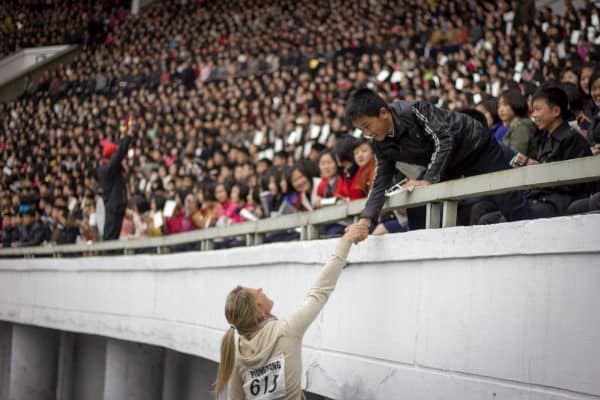
The Autumn version with added bonus of the Mass Games!
- September 18th - 23rd

The most comprehensive North Korea tour possible!
- October 3 - 14th
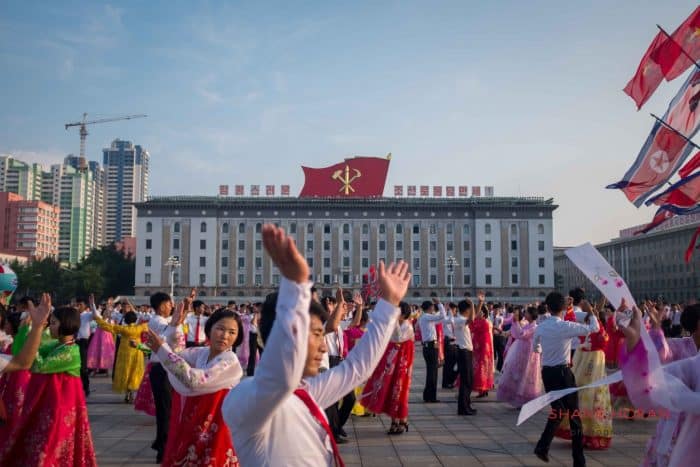
Itinerary Spring 2022
Our signature tour. There’s no other trip like it – designed and led by Rocky Road Travel founder, Shane.
- April 27th - May 7th

Itinerary Summer 2022
Our smallest ever group tour designed to get you the perfect shots behind the scenes.
- July 21st - 31st
North Korea Tours 2021

Itinerary May 2021
It’s never been done, so we’re doing it. The longest train journey in the world!
- May 15 - June 3rd
- 1795 - 2895
- 18 / 9 Days

Itinerary Summer 2021
Sights & events in Pyongyang with optional extensions to the DMZ & Sinuiju!
- May 31st - June 2 / 3 /4th
- 3 / 4 / 5 Days

Quite simply the ultimate North Korean experience!
- June 24th - July 5th

Itinerary Summer 2023
- July 22nd - Aug 1st
read our 5 star reviews!
Had a great time on the Chernobyl and Transnistria tour! Everything was done for me, and went smoothly with no complications at all. A wonderful experience and a company I would book with again without hesitation
Very well organised tour to North Korea, extremely professional tour guide and friendly staff at the time of booking
Niklas Berger
Victory day tour 2019 was incredibly fun. Good experience from start to finish, seamless booking & payment process. friendly staff and amazing guides in North Korea! Definitely an eye opening experience that we wont forget.
Phil Jordan
The Iraqi Kurdistan trip was on of the best guided tours/travel groups I’ve ever been with. Awesome value trips to amazing destinations.
James Martin
Chris thorjussen.

North Korea Tours - FAQs
Here's some of our most frequently asked questions and answers. for any other questions please get in touch by using the contact form below or email [email protected], click here to download a free shareable pdf.
A trip to North Korea is very safe despite what you may hear. As long as you follow the rules laid out in our pre-tour information you will be very welcome in North Korea. Even during high tension periods, tourism is never affected and continues as normal.
However it is important to note that they have what amounts to extremely strict lèse-majesté laws (our pre tour travel agreement which all tourists must sign before a tour covers these laws in greater details) and in the event you should contravene those laws the consequences can be severe. All will be explained to you in greater detail during the booking process and pre-tour meeting.
We apply for the visa on your behalf you then just collect it from us at the pre-tour meeting in China. All you need to do is fill out a form and send us a copy of your passport and a passport photo by email. There is a €50 extra cost for this. Check out our How to get the North Korea visa blog here .
All North Korea tours are “all inclusive”. This means that all tour nights in hotel twin share, all meals and all transport are included via train from Beijing. Two Korean local guides and a western tour organizer. Extra costs are the visa (€50) and optional flights to or from Beijing to Pyongyang.
The only other expected expenditure are tips for the Korean guides and any extra drinks/souvenirs you want to buy on tour.
No – there is no need for any vaccinations for trips to North Korea and Northern China.
We offer independent tours , as well as group tours. Check out the private tours page or get in touch for more details. Independent tours to North Korea are great for those with special interests, families & friends, return visitors or those who are definitely sure they’d rather be on their own.
Of course you can! For the most part, you are only unable to take pictures of military zones (aside from the D.M.Z), check points, or close up of soldiers.
It’s also suggested and courteous, to ask locals if you can take their picture. Other than these, or whatever else your guides deem unsuitable, snap away! Another thing to be aware of is that we usually will not go back to the hotel during the day, if you plan to use your camera a lot you may want to bring your charger with you. If you are a keen photographer you may want to consider the VIP Photo Tour which can guarantee to best access in a small group.
No. On any trip to North Korea you must be accompanied by a guide at all times, but this kind of adds to the mysticism of the country. During your stay in any hotel, feel free to explore around the hotel and to invite your Korean guides for a drink or Karaoke. If you see a place outside you’d like to visit you can ask your Rocky Road guide or if you’re travelling as an independent tourist you may ask your Korean guides, but please understand if the answer is no, it can’t be done.
Definitely not. Travelling to North Korea doesn’t restrict you from any future travel to other countries especially to South Korea. If you are travelling to South Korea directly before or after a tour with us it is absolutely fine.
Euro or Chinese Yuan (RMB) are the best currencies, personally we recommend RMB as it is much easier to get change for. In some areas USD are preferred, especially on the East Coast, but we will advise you before the tour if USD will be useful. Prices are usually set in euros and RMB. Credit cards (including American Express), PayPal, Alipay, etc are not accepted in the DPRK, nor are their ATM’s available so it’s best to bring more than you’ll need just in case. Further, getting change can sometimes be difficult so we recommend bringing small denominations. If you are exchanging money before your trip in your home country – request small denominations.
Yes! You will need to tip your guides. If you want to get what you’ve paid for and then some, a tip goes a long way in the DPRK, as it does in any tipping culture. We strongly recommend bringing a gift for your North Korean guides and driver also. This is something much appreciated by the local guides and your chance to make a difference to their lives, with 100% of your gifts and tips going directly to your guides, their families & friends. We suggest spending around €10 -€20 on the gift.
The DPRK has very limited access to foreign products, so it is a good idea to bring local specialties from your home country – beauty products (Japanese are preferred but not necessary), carton of cigarettes (Camel, along with Japanese brands such as Seven Stars, are the most popular – the Koreans prefer Western/Japanese cigarettes to Chinese ones).
Practical gift ideas such as medicine including painkillers, vitamins or cold and flu tablets are appreciated. Or, think outside the box: a nice scarf, small bicycle repair kit, razors (for men and women), electric toothbrush, chocolates, etc. Gifts will be shared between guides, the driver and also with their partners/ families, so do not worry about giving ‘male’ or ‘female’ gifts.
In general you are not required to tip service staff, though it has become accepted in Pyongyang but not expected. If you feel service staff have made a special effort you can quietly give them a tip if you wish. Keep in mind, that as in any service industry, the guides rely greatly on their tips, so be as generous as you like.
These devices are completely fine to bring into the DPRK. As a tourist you are unable to purchase a local simcard but you are able to make international phone calls or send emails out from certain hotels around the country. Satellite phones are illegal to bring inside North Korea.
The restaurants we visit caters for all vegetarians, vegans and other unique dietary requirements. We do recommend bringing in some snacks you prefer from home just in case you get the munchies on the road and can’t find anything suitable at the time.
The average group size is about 10 people. If in the unlikely event the number goes over 24 people then the group is split in two with two guides and two buses.
We have 6 years experience of operating in North Korea. All tours have been meticulously researched & perfected over time.
Our in country partners & contacts guarantee us unparalleled access to several places way off the beaten track. All group tours are led by both a local and western tour leader.
We don’t run tours in dangerous places. All itineraries are planned with our local partners expertise. On top of that we are based in Germany so all bank transfers are safe and secure in the EU.
Pay up to a 30% deposit to secure your place on the tour. The remaining amount is due at the pre-tour meeting in Beijing meaning you don’t need to pay a lump sum in advance.
All our tours are guaranteed departures at some of the most competitive rates on the market.
Check out what our customers are saying !
Get in Touch

📞 +491635158517 ✉️ [email protected]
Destinations
- Afghanistan
- North Korea
- Papua New Guinea
- South Sudan
- Agents & Partners
- Terms & Conditions
- Privacy Policy
- Sustainability
- Travel Insurance
Subscribe To Our Newsletter
Keep in touch with the latest news and info on our unique destinations.

Get in touch
Request more info or book a tour.
Fill in the form and we’ll get back to you in no time!

Why should you choose Koryo Tours?
Choosing to travel to unusual destinations such as North Korea is a big decision, and choosing the right people to take you is an incredibly important part of that. Learn about how we facilitate tourism responsibly in some of the most interesting and unique destinations on our planet, and at the same time ensure you get the most out of your once-in-a-lifetime experience .
Regions we visit
North korea.
Find tours in:
DPRK (North Korea)
DPRK (North Korea) Mongolia
Central Asia
Turkmenistan Tajikistan Kazakhstan Uzbekistan Kyrgyzstan
Russia Bhutan

Latest news
North korea borders opening updates (may 2024).
Updates on North Korea border openings. After borders tightly shut for the past 4 years, North Korea's borders look finally set to open once again.
'Day of the Sun' in North Korea is no more as DPRK Changes Name Holiday
North Korea to change name of 'Day of the Sun' holiday
You have successfully joined our subscriber list.
- Group Tours
- Private Tours
- Pyongyang Marathon
- Turkmenistan
- Cultural Engagement
- Country profile
- Terms & conditions
- Why choose Koryo
[email protected] | + 86 10 6416 7544 Room A409, Jucai Building. No. 76 Caoyuan Hutong. Dongcheng District, Beijing, 100027, PR China
中国北京市东城区草园胡同76号聚才大厦A 座409 室, 邮编:100027 Download contact card
Not registered yet? Register now
Trouble logging in? Reset password
* All fields are mandatory
Got an account already? Let me log in
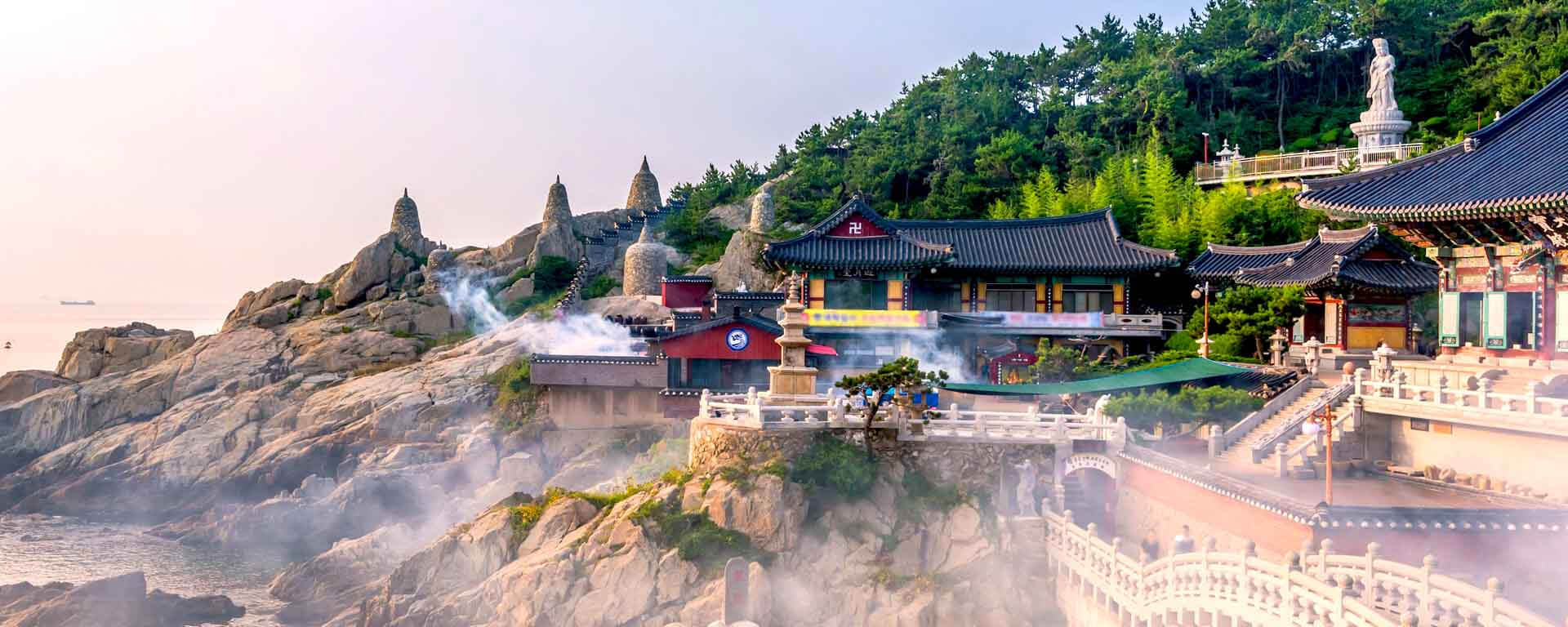
North Korea Tour Packages
Plan your trip with our customized North Korea tour packages
Get the Best Travel Deals by Experts
Our CRM team analysis your requirements and assign to destination expert. Assignment happen as soon as possible on best effort basis.
CRM team sends first response to you which includes advisors contact details and response time etc.
Sales advisor gives quotation to you with in 4 hrs for FIT (1-10 people) 24 hrs for group (more then 10 people)
Note: We work from mon - fri 9:30 AM to 6:30 PM
Incredible journeys to North Korea with DOOK!
No matter your travel style, we have a North Korea package tailored for you

North Korea Tour 6 Days
Explore North Korea with DOOK
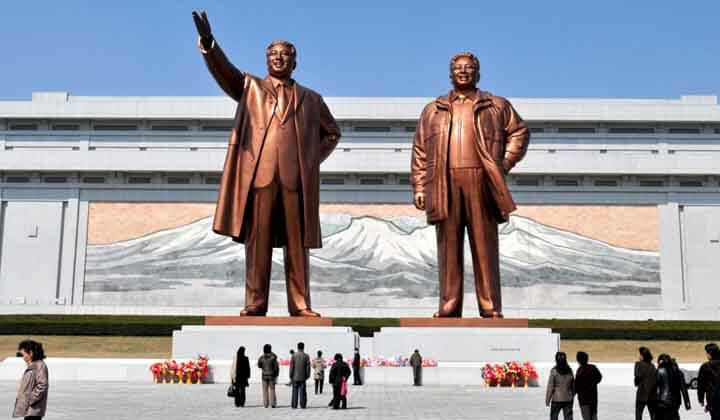
North Korea: The Land of History and Mystery Learn about the Juche Ideology with Dook's North Korea Tour Packages North Korea , also known as the Democratic People's Republic of Korea, is located in East Asia, bordered by China to the north, Russia to the northeast, and South Korea to the south. The country is known for its rich cultural heritage, historic landmarks, and extraordinary natural scenery. One of the most notable landmarks in your North Korea Tour is the Juche Tower, which was built to commemorate the Juche Ideology. This ideology is the official state philosophy of North Korea and emphasizes self-reliance and independence. The Juche Tower is 170 meters tall and offers mesmerizing views of the city from its top floor. Another iconic landmark is the Mansudae Grand Monument, which features enormous bronze statues of former leaders Kim Il-sung and Kim Jong-il. North Korea is also known for its stunning natural beauty, rugged mountains, pristine lakes, and beautiful waterfalls. With Dook Travel's North Korea Holiday Packages , visit each one of these natural wonders. The country is home to several scenic parks, including the Myohyang-san National Park and the Rason Special Economic Zone, both popular tourist destinations. The visitors with their North Korea Tour Packages can experience traditional Korean culture and cuisine, known for its use of fresh ingredients, such as rice, vegetables, and spices. Some popular dishes include bibimbap, a mixture of rice, vegetables, and meat, and bulgogi, marinated beef grilled and served with rice. The visitors can also attend various cultural events and festivals, such as the Arirang Mass Games, a large-scale gymnastics and artistic performance every two years. In addition to its cultural attractions, Dook’s North Korea Packages also include exciting visits to several museums and exhibitions that showcase the country's rich history and heritage. These include the Korean Revolution Museum, the Pyongyang History Museum, and the Kim Il-sung Museum. The visitors can learn about the country's past and the events that shaped its history, as well as see a variety of historical artefacts and memorabilia. They can visit the Victorious Fatherland Liberation War Museum, which showcases the country's victory over the US in the Korean War. These sites offer a fascinating insight to North Korea's past, present, and future, making them an essential part of any North Korea Tour Packages .
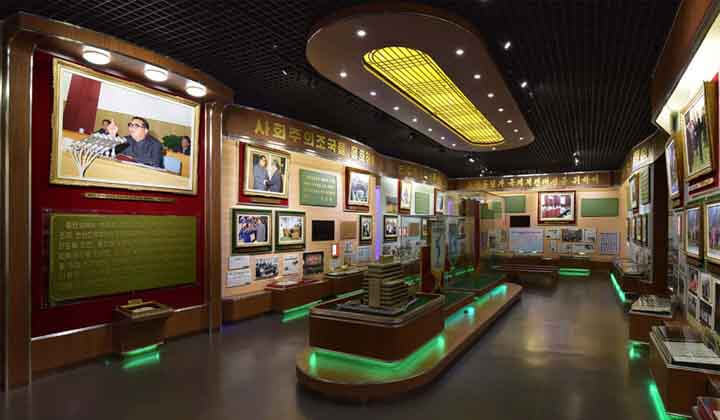
North Korea is a destination that provides a truly one-of-a-kind travel experience and is a must-to-visit for those looking to broaden their cultural horizons. Plan your North Korea Tour with Dook International and witness this hidden cultural gem. General Information for your North Korea Tour : Capital: Pyongyang Languages: Korean Currency: North Korean Won Driving Side: Right Best Time to Travel: April to October Explore North Korea North Korea is a country that is full of surprises and is waiting to be explored. Whether you are interested in its rich cultural heritage, stunning natural scenery, or unique history, North Korea is a destination that offers something for everyone. Below is a list of destinations which are a must-to-have in your North Korea Packages :

1. Pyongyang: The Capital of North Korea Pyongyang is the largest city in North Korea and serves as the country's political and cultural centre. With Dook's North Korea Holiday Packages , explore its modern architecture, cultural landmarks and bustling markets. The Mansudae Grand Monument is another iconic landmark in Pyongyang, featuring enormous bronze statues of former leaders Kim Il-sung and Kim Jong-il. In addition to its landmarks, visitors can also explore the city's vibrant markets and sample local cuisine and purchase traditional Korean goods. The city is also home to a number of museums, including the Korean Revolution Museum and the Kim Il-sung Museum, as well as a variety of cultural events and festivals, such as the Arirang Mass Games. 2. The Korean Revolution Museum: A Window to North Korean History This museum is dedicated to showcasing the events and people that shaped North Korea's history and offered a fascinating glimpse into the country's past. The museum features a range of exhibits, including photographs, artefacts, and documents, as well as interactive displays and multimedia presentations. The visitors on their North Korea Tour can learn about the country's revolutionary history, including its struggles for independence, the Korean War and the development of the Juche Ideology. The museum also features several personal items belonging to former leaders, such as Kim Il-sung and Kim Jong-il, giving visitors a unique insight into their lives and legacies. 3. The Juche Tower: A Symbol of North Korean Ideology The Juche Tower is a 170-meter-tall monument in Pyongyang and symbolizes the country's revolutionary ideology. Visitors can take an elevator to the top of the tower and admire the incredible views of the city and its surroundings with our North Korea Tour Packages . The tower also features a museum and a library, where visitors can learn about the Juche Ideology and its role in the country's history and development.
Top Bucket List Experiences in North Korea 1. Witness Korean Talent at the Mass Games The Mass Games are a unique and spectacular cultural event held in North Korea, showcasing the athletic and artistic talents of the country's people. It is a must-have in your North Korea Packages . The games feature synchronized performances by thousands of gymnasts, dancers, and athletes, accompanied by music, lights and special effects. The visitors can witness this inspiring national pride and unity, considered one of the country's most significant cultural treasures. 2. Indulge in the Traditional Korean Cuisine North Korea is known for its rich and flavour filled cuisine, which features a variety of traditional dishes, such as kimchi, bulgogi, and bibimbap. With Dook's North Korea Tour Packages , make sure you get a taste of it all. The visitors can sample these delicious dishes in local restaurants and street stalls or take cooking classes to learn how to prepare them. In addition, the country is also home to a range of traditional teas, such as green tea and ginseng tea, which are considered essential components of the local culture and lifestyle. North Korean cuisine also features a variety of seafood, including crab, clams, and oysters, as well as game meats such as wild boar and deer. 3. Experience the Splendour of Arirang Festival The Arirang Festival is a celebration of North Korean culture and arts. It features dancers, gymnasts, acrobats as well as musical performances and traditional Korean games. The visitors on their North Korea Tour can witness the country's rich cultural heritage and experience its vibrant traditions, as well as admire the incredible talent and skill of the performers. 4. Explore Natural Beauty at Mount Myohyang Mount Myohyang is a scenic mountain range in North Korea and is known for its beautiful natural scenery, including forests, waterfalls, and hot springs. The visitors with our North Korea Tour Packages can hike through the mountains, explore the local villages, and take in the splendid vistas from the mountaintops. The area is also home to many historical and cultural sites, such as the Kaesong Koryo Museum and the Myohyang-san National Park, both popular tourist destinations. They can also experience traditional Korean culture and cuisine in the local villages and purchase handmade crafts and goods from local artisans. 5. Learn about the Koryo Dynasty at the Kaesong Koryo Museum This museum is located in the ancient city of Kaesong. It is dedicated to the Koryo dynasty, which ruled over the Korean Peninsula from 918-1392 and is another must-to-have in your North Korea Holiday Packages . The museum features a range of exhibits, including artefacts, ceramics, calligraphy, traditional Korean architecture and a beautifully landscaped garden. The visitors can learn about the Koryo dynasty and its impact on Korean history and culture and see various historical artefacts and artworks. The museum is located in the heart of the city. It is surrounded by several other cultural and historical sites. It includes ancient palaces, temples, and museums, making it an ideal starting point for exploring the city and its rich heritage. Get ready to visit the unexplored country of North Korea with Dook International A North Korea Tour is a unique and fascinating experience. With Dook's North Korea Packages , get a glimpse into a rarely seen part of the world. You should plan your North Korea Tour with a trusted travel company like Dook International , which specializes in safely organized tours to this hidden part of the world.
Latest Blogs
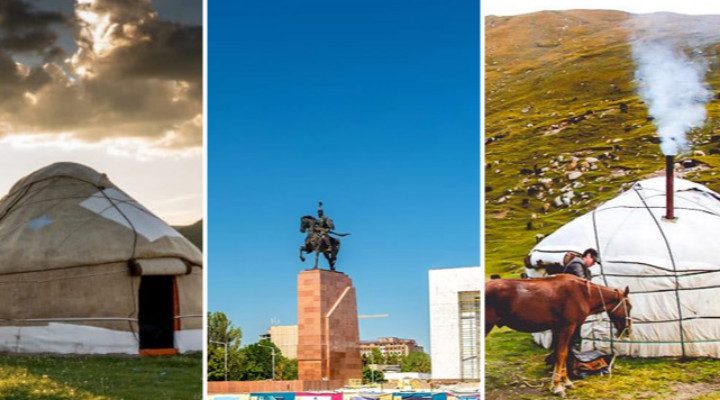
Top 10 Reasons to Visit Bishkek, Kyrgyzstan
May 17, 2024
Bishkek is an all-round gem of Central Asia, where there is everything. From Ala-Too mountains to scenic beauty,...
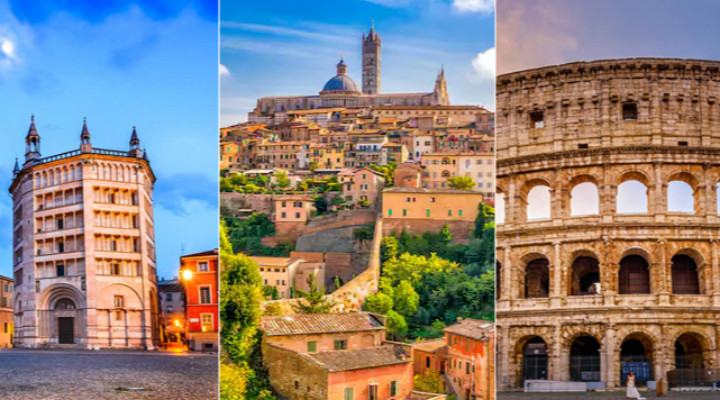
20 Best Cities to Visit in Italy
May 16, 2024
Italy is every traveler’s dream. It remains at the top of everyone’s bucket list to visit. It is...
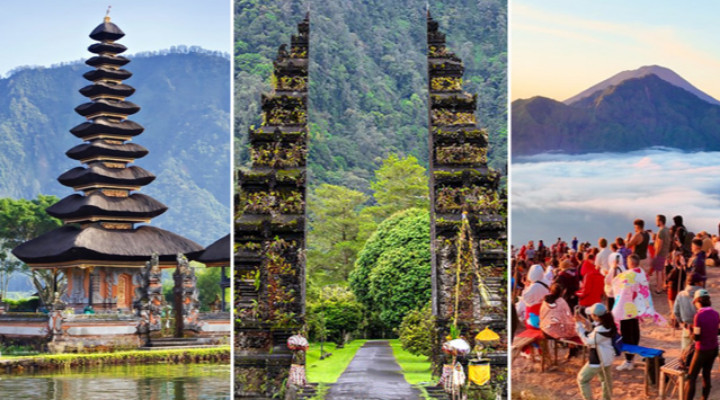
35 Awe-Inspiring Places to Visit in Bali, Indonesia
May 13, 2024
Bali is an exquisite destination that fills tourists’ hearts with joy and adventure. It is a tropical destination...

Top 5 Jain Restaurants in Almaty & Kazakhstan
May 08, 2024
Kazakhstan is a land of many adventures and wonders. However, it is also a place filled with rich...
- Enquire Now
- Get a Call Back
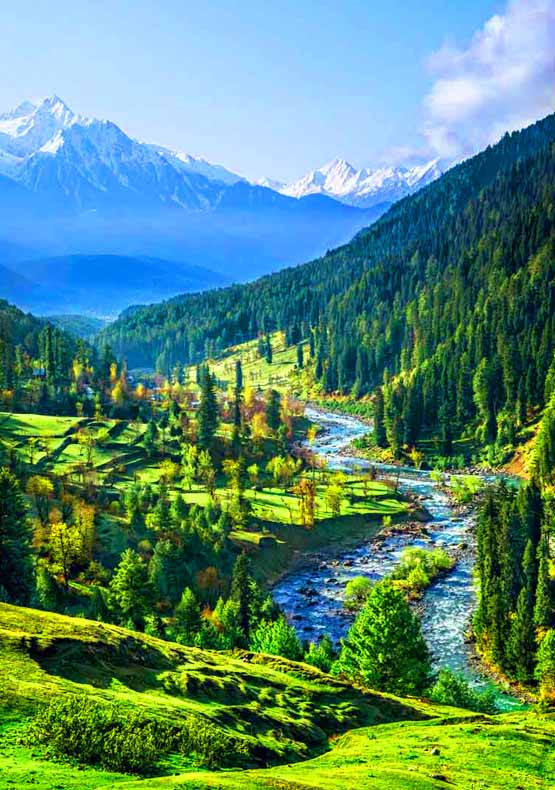
Send us a query
Ready to venture out into the world? Fill the form below and start your brand new journey with us
Data collected by Dook International is used for internal purposes to process and respond to your request.
Cookies on GOV.UK
We use some essential cookies to make this website work.
We’d like to set additional cookies to understand how you use GOV.UK, remember your settings and improve government services.
We also use cookies set by other sites to help us deliver content from their services.
You have accepted additional cookies. You can change your cookie settings at any time.
You have rejected additional cookies. You can change your cookie settings at any time.
- Business and industry
- Trade and investment
- Embargoes and sanctions
UK and partners target Russia-DPRK ‘arms-for-oil’ trade with new sanctions
The UK, alongside international partners, announces a new package of sanctions to target Russia and North Korea (DPRK)’s illicit arms-for-oil partnership.

- the UK announces new package of sanctions to target the Russia-North Korea ( DPRK ) ‘arms-for-oil’ trade, alongside international partners
- 3 companies and 1 individual will be subject to a range of measures, including asset freezes, travel bans and transport sanctions
- new sanctions show Russia that it will fail in trying to hide its illicit partnership with the DPRK , following its veto of the mandate of the DPRK UN Panel of Experts
The UK alongside international partners has today announced a new package of sanctions to target Russian and North Korean ( DPRK ) attempts to contravene or circumvent UN sanctions with its ‘arms for oil’ trade.
The sanctions highlight the joint malign efforts of Russia and the DPRK to circumvent sanctions on petroleum products, which help facilitate the DPRK ’s unlawful military programmes.
UK Foreign Secretary Lord Cameron said:
Putin is straining every sinew to sustain his illegal war in Ukraine, even resorting to illicit ‘arms-for-oil’ trade deals with the DPRK , blatantly violating UN sanctions that Russia itself voted for, and vetoing UN Monitoring panels that report on their activity. We cannot – and we will not – stay silent as the DPRK and Russia engage in arms transfers. The UK will continue to hold the DPRK and Russia to account. We will work with our partners to protect the global non-proliferation regime and international peace and security.
The announcement comes after Russia’s veto of the mandate renewal for the United Nations Security Council’s 1718 Committee Panel of Experts, which had been responsible for monitoring DPRK sanctions implementation, compliance and enforcement.
This is another example of Russia’s flagrant support to the DPRK in breach of UN sanctions, in support of its own illegal war in Ukraine.
Today’s sanctions package includes the designation of:
- DPRK company Paekyangsan Shipping Co Ltd, which operates DPRK -flagged vessel Paek Yang San 1, involved in the facilitation of DPRK military programmes by transferring petroleum products between Russia and DPRK
- Toplivo Bunkering Company (TBK) and company director Aleksey Mikhailovich Vorotnikov, for allowing vessels involved in the transfer of petroleum to DPRK to bunker in the Russian port of Vostochny
- Vostochnaya Stevedoring Co LLC, operating from the port of Vostochny, which is a prominent Russian provider of cargo services within the Russian transport industry
Aleksey Mikhailovich Vorotnikov will be subject to an asset freeze and travel ban, Paekyangsan Shipping Co Ltd subject to an asset freeze and transport sanction, and Toplivo Bunkering Company is subject to an asset freeze. Vostochnaya Stevedoring Co LLC is subject to an asset freeze and trust services sanction.
The sanctions package reinforces the fact that Russia will not succeed in keeping its illicit partnership with the DPRK hidden, following its UN Panel of Experts veto.
The 1718 Committee’s Panel of Experts mandate expired on 30 April 2024 following Russia’s veto of the mandate renewal. The Panel provided credible, objective, and independent reporting which enabled the international community to monitor the implementation of UN sanctions and helped to prevent North Korea’s unlawful and dangerous development of nuclear and ballistic missile programmes. This action undermined resolutions Russia previously voted for, designed to protect the non-proliferation regime and international peace and security.
The UK’s new sanctions are part of coordinated action with our international partners. The US announced its package on Thursday (16 May) and further announcements from partners are expected today (Friday 17 May).
View the full UK Sanctions List .
This package includes 4 designations in total: 3 designations under the Democratic People’s Republic of Korea (Sanctions) (EU Exit) Regulations 2019 (Paekyangsan Shipping Co Ltd, TBK, Aleksey Mikhailovich Vorotnikov), and 1 designation under the Russia (Sanctions) (EU Exit) Regulations 2019 (Vostochnaya Stevedoring Co LLC).
Asset freeze
An asset freeze prevents any UK citizen, or any business in the UK, from dealing with any funds or economic resources which are owned, held or controlled by the designated person. UK financial sanctions apply to all persons within the territory and territorial sea of the UK and to all UK persons, wherever they are in the world. It also prevents funds or economic resources being provided to or for the benefit of the designated person.
A travel ban means that the designated person must be refused leave to enter or to remain in the United Kingdom, providing the individual is an excluded person under section 8B of the Immigration Act 1971.
Transport sanctions
Where a transport sanction applies, a ship owned, controlled, chartered or operated by a designated person is prohibited from entering a port in the UK, and may be given a movement or a port entry direction.
Trust services sanctions
Trust services sanctions mean it is generally prohibited within the UK, and for UK persons outside the UK, to provide trusts services to or for the benefit of a designated person. Trusts services means:
- the creation of a trust or similar arrangement
- the provision of a registered office, business address, correspondence address or administrative address for a trust or similar arrangement
- the operation or management of a trust or similar arrangement, or
- acting or arranging for another person to act as trustee of a trust or similar arrangement, where “trustee”, in relation to an arrangement similar to a trust, means a person who holds an equivalent or similar position to a trustee of a trust
Media enquiries
Email [email protected]
Telephone 020 7008 3100
Contact the FCDO Communication Team via email (monitored 24 hours a day) in the first instance, and we will respond as soon as possible.
*UN]: United Nations
Share this page
The following links open in a new tab
- Share on Facebook (opens in new tab)
- Share on Twitter (opens in new tab)
Is this page useful?
- Yes this page is useful
- No this page is not useful
Help us improve GOV.UK
Don’t include personal or financial information like your National Insurance number or credit card details.
To help us improve GOV.UK, we’d like to know more about your visit today. Please fill in this survey (opens in a new tab) .
DPRK (North Korea)
I also want to see:
- Group Tours
- Private Tours
- Specialist Tours
- Special Events
Our private independent tours are a great way to travel to the North Korea if you want to have a more personal experience, fix your own dates, travel at your own pace, or explore specific aspects of this fascinating and complex country.
Private Independent Tours by Koryo
Koryo Tours offers customised private independent tours based on more than 25 years of experience arranging tours to North Korea.
Contact us to get in touch with one of our expert tour managers who will help design a tailored tour itinerary and package for you based on your available dates, budget, and interests. Download our new (and free!) Koryo Tours North Korea Guide Book to explore where you can go and what you can see.
We offer both standard and budget private independent tour packages to North Korea. Our base tour packages include transport between Beijing and Pyongyang by train with transfer at Dandong (hard-sleeper, six-beds per cabin), accommodation in North Korea, meals, and entry fees.
In North Korea, two professional Korean guides will accompany your party and you will have your own driver and vehicle, allowing you to travel at your own pace. Koryo Tours staff provide a thorough pre-tour briefing on travel guidelines, etiquette, safety, and travel in North Korea, but do not accompany private tours in-country.
Base pricing depends on your group size, the length of the tour, and hotel class. Please see below for details and for upgrades, such as flights from Beijing, Shenyang, Vladivostok, or Shanghai - as well as other exciting add-ons.
For groups of 16 travellers or more, we can send one of our expert tour leaders to accompany your group or provide additional discounts. Our tour leaders' schedules fill up so contact us early!
About Budget Hotels in North Korea
Budget hotel options in Korea are generally decent and clean, but with limited facilities and limited hours of hot water depending on the time of year. Choose from the Sosan, Chongryon, Changgwangsan, Haebangsan, Rakrang, or Ryanggang Hotels in Pyongyang, each with its own character.
Our North Korea budget tours are designed to provide a budget option for all travellers. We do not offer discounts on our budget tours except to children under the age of 12.
About Standard Hotels in North Korea
Standard hotels in North Korea typically have comprehensive facilities (restaurants, shops, entertainment) as well as 24-hour hot water and electricity. Choose from the Yanggakdo or Koryo Hotels in Pyongyang, home away from home for most visitors to North Korea.
We offer discounts on our standard North Korea private tours for full-time students, return customers, and children under the age of 12.
Transport Upgrades
One-way flight upgrade to/from Beijing - 249 EUR per person.
Round-trip flight upgrade from Beijing - 349 EUR per person
See our schedule for Trains and Flights to North Korea 2018-9
Take the train from North Korea to Russia!
In 2018 Koryo Tours, pioneered a new train route from Pyongyang Rason in North Korea's far northeast or to Vladivostok and beyond! See our Trans-DPRK Rail: Across North Korea by Local Train extension for more details
Train and other transport upgrades coming soon!
Run the Pyongyang Marathon on 12 April 2020!
North Korea Visa Service
We offer a North Korean visa service in Beijing for 50 EUR and do not need your physical passport for the process. North Korean visas issued in Beijing are issued as a separate document outside of your passport. This document must be given upon exit from North Korea.
For visa collectors, it is possible to have a visa arranged for issue in your passport if there is a North Korean embassy in your home country. In these cases, an additional visa fee needs to be paid directly to the embassy in cash. This typically ranges from 10-30 EUR, depending on the embassy in questions and fees subject to change. Unfortunately we are unable to request for visas to be affixed to passports outside of your home country.
As a responsible travel company, we require all travellers to North Korea to have insurance coverage for emergency medical evacuation from North Korea and medical treatment.
Insurance for the trip can be booked with Starr Insurance (Shanghai) through Koryo Tours or arranged independently. Please see our insurance page for more details.
Additional Important Information for Travel to North Korea
The default language of our tours is English, but requests can be made for guides who speak German, Spanish, French, Hungarian, Russian, Italian, Polish, Chinese, or Japanese. Guides can, of course, also help with your Korean!
Interested in a private tour? Contact us for a consultation.
The following information is helpful for us in creating a custom itinerary and specific quote for you:
*Number of travellers in your party
*Your available dates and travel restrictions you might have
*Desired length of tour
*Any questions, desired locations, or interests you would like to see reflected in your itinerary.
We look forward to hearing from you!
Last updated 11 December 2018
- Pyongyang Marathon
- Turkmenistan
- Cultural Engagement
- Country profile
- Terms & conditions
- Why choose Koryo
[email protected] | + 86 10 6416 7544 Room A409, Jucai Building. No. 76 Caoyuan Hutong. Dongcheng District, Beijing, 100027, PR China
中国北京市东城区草园胡同76号聚才大厦A 座409 室, 邮编:100027 Download contact card
Not registered yet? Register now
Trouble logging in? Reset password
* All fields are mandatory
Got an account already? Let me log in
Ukraine war latest: Ukraine 'destroys Russian Black Sea minesweeper'
Ukraine's navy says it has destroyed a Russian Black Sea fleet minesweeper. Meanwhile, an attack on a residential area in Kharkiv left six civilians injured - with Ukraine saying it is investigating the bombing as a potential war crime.
Sunday 19 May 2024 13:38, UK
Please use Chrome browser for a more accessible video player
- Two killed in Russian strikes on Kherson | Five dead in Kharkiv
- Ukraine investigating 'potential war crime' after civilians wounded
- Ukrainian soldiers reveal how they were secretly moved ahead of Russian invasion
- Russia takes control of village in Kharkiv - defence ministry
- Live reporting by Josephine Franks
Five people have died in strikes on two villages in the Kupiansk district in Kharkiv, local officials say.
It brings the number of people killed in the Kharkiv region today to 10, after five people died in strikes on a recreation area in a northern suburb of the city of Kharkiv.
Local governor Oleh Syniehubov said Russian forces shelled two villages with a self-propelled multiple rocket launcher.
At least nine people were injured in the attacks.
We're getting photos of the aftermath of strikes on a recreation area just outside Kharkiv which killed five people and left at least 16 injured.
The pictures show a lakeside resort, where shortly before the attacks local residents were "resting, enjoying a normal way of life", according to a local police inspector (see our 11.54 post).
Parademics and police tend to the wounded, but were also caught up in the second strike, which came about 20 minutes after the first.
These are known as "double tap" strikes, which kill or injure emergency workers at the scene of strike impacts.
Here are the latest photos from the scene...
As Russian forces push across Ukraine's northern fringes, footage from the frontline tells us how this new offensive is unfolding.
Sky News has geolocated videos provided by Ukrainian sources that shed light on how fighting unfolded in the early stages of Russia's assault from the north.
OSINT producer Sam Doak maps how a new front has been opened in the north of Ukraine...
A seven-month pregnant woman was among five people killed in strikes on a Kharkiv recreation area, local police said.
At least 16 people were injured; eight of them are in a serious condition, police said.
An 8-year-old child received minor injuries and a police officer and paramedic were injured in the second strike, they added.
You can see some photos from the scene in this Facebook post from Kharkiv police...
President Salome Zourabichvili has vetoed a controversial bill which sparked weeks of mass protests Georgia - but it is likely her veto will be overturned by the government majority.
The "foreign agents" bill passed by parliament earlier this week would force media and non-governmental organisations and other non-profit groups to register as "pursuing the interests of a foreign power" if they receive more than 20% of funding from abroad.
The president said the bill, which the US has described as a "Kremlin style law", contradicts Georgia's constitution and "all European standards", adding it "must be abolished".
She is increasingly at odds with the ruling party, Georgian Dream, considered by many as pro-Russian.
Read more about the rule and what the president's veto means below...
The number of people killed in Russian airstrikes in a recreation area just outside Kharkiv has risen to five, and at least 16 are injured.
Kharkiv mayor Ihor Terekhov gave update on Telegram, saying: "The explosions heard in Kharkiv around noon occurred in a nearby suburb.
"Two Russian missiles hit a recreation centre where people were relaxing, killing five people and injuring sixteen others."
Yaroslav Trofimko, an inspector with the local police department, said there "never any soldiers here".
"It was a Sunday, people were supposed to be here to rest, children were supposed to he here, pregnant women, resting, enjoying a normal way of life."
He arrived on the scene after the first blast, and was there when the second strike hit the same scene around 20 minutes later.
Ukraine has frequently accused Russia of using "double tap" strikes to kill or injure emergency workers at the scene of strike impacts.
Kharkiv's governor Oleh Syniehubov earlier said a paramedic was among those injured.
Russian air defences downed 103 Ukrainian drones and 12 United States-made ATACMS missiles over the past 24 hours, the Russian defence ministry said .
Russian officials earlier said that Ukraine had fired nine ATACMS at Crimea and attacked Russian regions with at least 60 drones, forcing one oil refinery in southern Russia to halt operations.
We're getting more news from the scene of a Russian strike in a northern suburb of Kharkiv where four people were killed, as reported in our 10.30 post.
The number of people reported injured has risen from eight to 15.
A recreation area was destroyed, according to Reuters correspondents at the site.
Rescuers described a powerful blast, followed by a second, "double tap" strike about fifteen minutes later.
A man's corpse lay under the rubble of what just over an hour previously was a busy lakeside restaurant area on a sunny day.
A woman stumbled around in shock looking for her handbag in the wreckage.
"The occupiers attacked the area where local residents were relaxing," Kharkiv's governor, Oleh Syniehubov, said on Telegram.
In recent weeks, Kharkiv city and the region of the same name have been under constant attack by Russian missiles and guided bombs as Russian troops have launched an offensive in the northeast of the region.
Ukraine fired long-range missiles at Crimea and attacked Russia with at least 60 drones in a major attack last night.
Meanwhile Ukraine says it destroyed more than 30 Russian drones.
Russian air defences shot down 57 Ukrainian drones over its southern Krasnodar region, the country's defence ministry said.
As we reported in our 8.26 post, an oil refinery hit by debris had to halt operations, with local military officials saying there was no fire or damage.
Local news outlet Astra published videos appearing to show an explosion at the refinery as it was hit by a drone. The videos could not be independently verified.
Nine long-range ballistic missiles and a drone were destroyed over the Russia-occupied Crimean Peninsula following Friday morning’s massive Ukrainian drone attack that cut off power in the city of Sevastopol.
The Russian-installed governor of Ukraine's partially occupied Kherson region, Vladimir Saldo, said one person died and 16 were wounded when a Ukrainian drone hit a minibus on Sunday morning.
In Ukraine, air force officials said air defence shot down all 37 Russian drones launched against the country overnight (more in our 7.20 post).
Four people have been killed and at least eight more injured in a Russian airstrike on Kharkiv, Ukrainian officials say.
Kharkiv's governor Oleh Syniehubov said the strike hit the residential area of Malodanyliv.
A paramedic was among those injured, he said on Telegram.
Be the first to get Breaking News
Install the Sky News app for free


IMAGES
VIDEO
COMMENTS
travel time. Flight entry included! Beat the summer rush in the DPRK and join this North Korea budget tour! The. best way to see highlights incl. city tour of Pyongyang, historic Kaesong, and Nampo on the West Coast. From 999 EUR per person. Please apply by 31st May, 2024.
Our published package price is what you pay. Our tours are an all-inclusive experience of return flights between Pyongyang, DPRK visa, premium accommodations, vetted meals, air-conditioned transport and driver, English-speaking Korean guides, entrance fees and unparalleled service! ... My trip to North Korea was one of the most fascinating ...
The DPRK Highlights - Autumn - 4 Nights. November 5 - 9, 2024. 4 Nights - From €1099. In this 4-night tour of North Korea, discover the highlights with a tour of the major political sites in Pyongyang, a visit to the DMZ and even make an off-the-beaten-track visit to the city of Nampo.
Liberation Day & Summer Tour With Mass Games - August 2024. Visit Pyongyang and stay longer as you explore North Korea's best beaches and hiking treks. Start Date : August 12th 2024 End Date : August 20th / 23rd 2024. Duration: 7 days / 10 days. Flight option: €195 flight one way or €295 return.
Our private tour packages are all-inclusive of return transport (either train or flight) to North Korea, premium accommodations, all meals, entry fees, two local English-speaking North Korean guides, modern air-conditioned land transport, and driver. Our packages include the best available accommodations in each region.
This North Korea tour package includes a city tour of Pyongyang and a a visit to Kaesong south of the 38th Parallel on the North-South border. The clear skies, snow-covered streets, and Koreans fully kitted out for a North Korean winter wrapped up in hats and scarves make for great pictures! Plus, you'll be amongst the first to hear about the ...
Since there are thousands of tour operators around the globe, Preferred or Premier badges are awarded to companies that Travelstride has determined meet the highest standards of professionalism, customer satisfaction, and quality. Compare the best 7 North Korea Tours, vacations packages, & adventures from 6 local experts and top companies.
KTG North Korea Travel. UPDATE August 2023: The DPRK has re-opened its borders. Please read here or follow us on Facebook for more information.. Specialists in promoting tourism in North Korea, at KTG we organise tours to one of the world's most secretive and less visited destinations in the world; the Democratic People's Republic of Korea (DPRK, commonly known in the West as North Korea).
Day 5, Mount Myohyang: Pyohon Temple, International Friendship Exhibition, enjoy a traditional Korean BBQ. Day 6, Kaesong: DMZ, site of the 1953 Korean Armistice Agreement, Koryo Museum, Tomb of King Kongmin. Day 7, Return to Beijing. Trips that follow this itinerary: North Korea Highlights with Intrepid - 9 Days, value trip.
Join us on this winter essential tour as we draw nearer to the end of the year and as Pyongyang enters its beautiful frosty winter season! This is an extremely action-packed city buster tour, with us visiting Pyongyang, the DMZ and the two rural cities of Kaesong and Sariwon. With the trip taking place during the last week of November this trip ...
5 Days. €1415 (2 - 5 People / Per Person) or €1591 Solo Traveller. East coast and Beach Explorers Tour. Head well off the beaten path and head to North Korea's untouched east coast. 8 Days. €1705 (2 - 5 People / Per Person) or €2013 Solo Traveller. Cycling Tour. Ditch the bus and explore Pyongyang by bike! 5 Days.
5 Nights - from €1360. This 5-night classic tour of North Korea is designed to cover all the classic sites in one extensive action-packed itinerary. You'll visit the political highlights in Pyongyang such as the Tower of Juche Idea, Victorious Fatherland Liberation War Museum and the Kumsusan Palace of the Sun where the Great Leaders lie ...
Contact us to discuss your tailor made package tour. Let's make your North Korea tour dream a reality! Call +4915114575768 or email [email protected] anytime for more information. North Korea Travel Packages As one of the leading North Korea travel companies, Rocky Road Travel offer some of the most competitive North Korea Travel.
4.5 Avg. Rating for North Korea Trips|4,514 Reviews for North Korea Trips. All Intrepid Travel company reviews. Why we love them. They're very committed to sustainable and responsible tourism and contribute to important initiatives like climate action. Featured North Korea Trips. # 2. of 5 matches. premier. Explore!
The most well-known company that offers tour packages to North Korea is Koryo Tours, who have organised tours to the DPRK since 1993. Other well-established tour companies to consider are Regent Holidays and Uri Tours. There are only two ways to enter North Korea, both of which are via China. The longer option is a 25 hour train journey from ...
All Inclusive costs. A typical A standard North Korea tour package with Rocky Road Travel will cost approx €1050 all inclusive. This will include return overnight sleeper trains from Beijing to Pyongyang, as well as all transport in North Korea with a driver and guides (English-speaking). Accomodation is covered, which is 4 nights in a 4-star ...
Group North Korea Tours 2024. Map. All North Korea tours are led by a western English speaking tour leader as well as two local guides. Our tours start and finish in Beijing, all you need to do is meet us there. Train travel from Beijing to Pyongyang & return is included. All tours are confirmed departures.
Choosing to travel to unusual destinations such as North Korea is a big decision, and choosing the right people to take you is an incredibly important part of that. Learn about how we facilitate tourism responsibly in some of the most interesting and unique destinations on our planet, and at the same time ensure you get the most out of your ...
North Korea: The Land of History and Mystery Learn about the Juche Ideology with Dook's North Korea Tour Packages North Korea, also known as the Democratic People's Republic of Korea, is located in East Asia, bordered by China to the north, Russia to the northeast, and South Korea to the south. The country is known for its rich cultural heritage, historic landmarks, and extraordinary natural ...
the UK announces new package of sanctions to target the Russia-North Korea (DPRK) 'arms-for-oil' trade, alongside international partners3 companies and 1 individual will be subject to a range ...
Our base tour packages include transport between Beijing and Pyongyang by train with transfer at Dandong (hard-sleeper, six-beds per cabin), accommodation in North Korea, meals, and entry fees. In North Korea, two professional Korean guides will accompany your party and you will have your own driver and vehicle, allowing you to travel at your ...
According to state-run KCNA, Kim Yo Jong said North Korea's recently-shown tactical weapons, such as rocket launchers and missiles, are for defence against South Korea, with the two countries ...